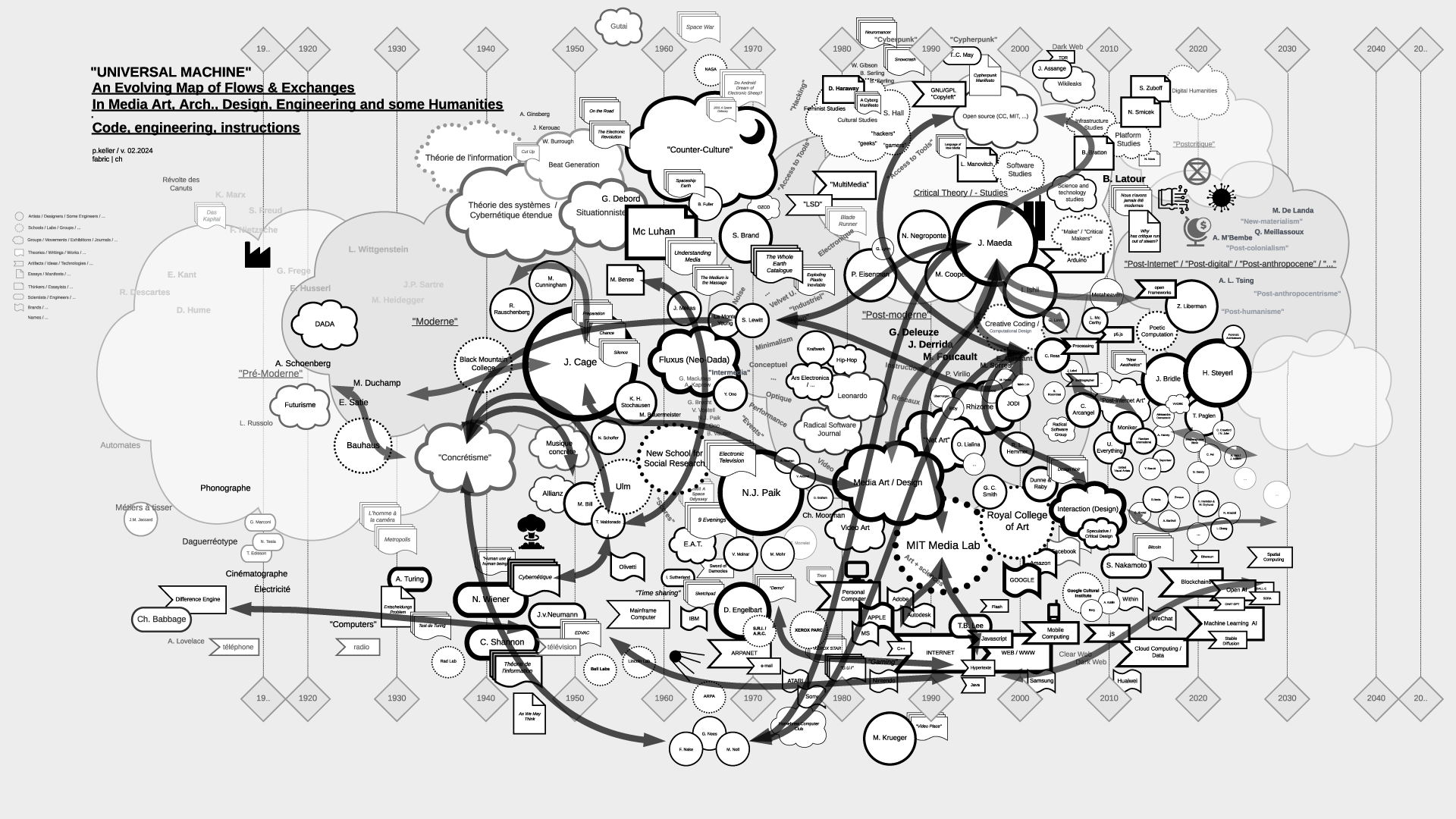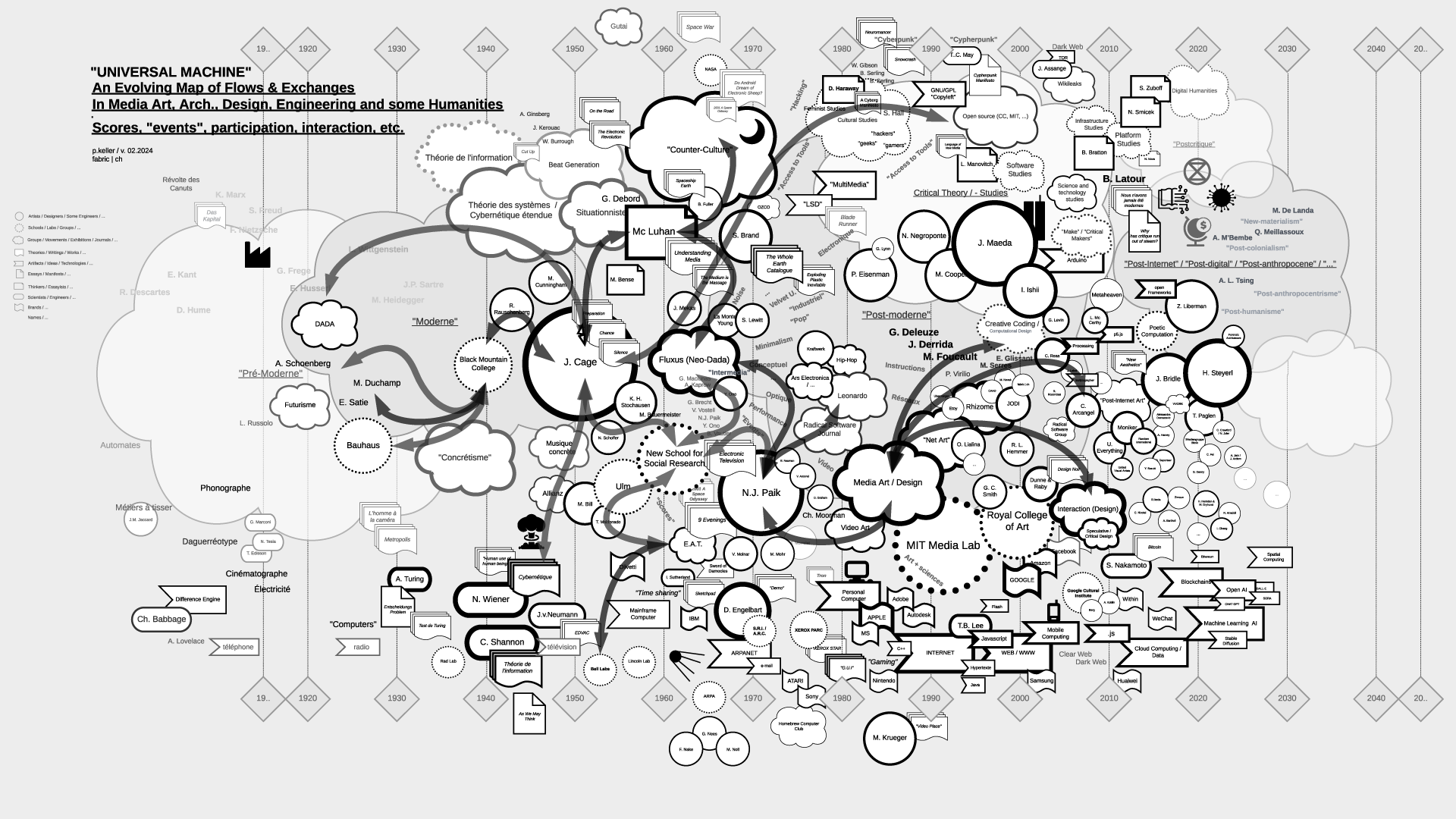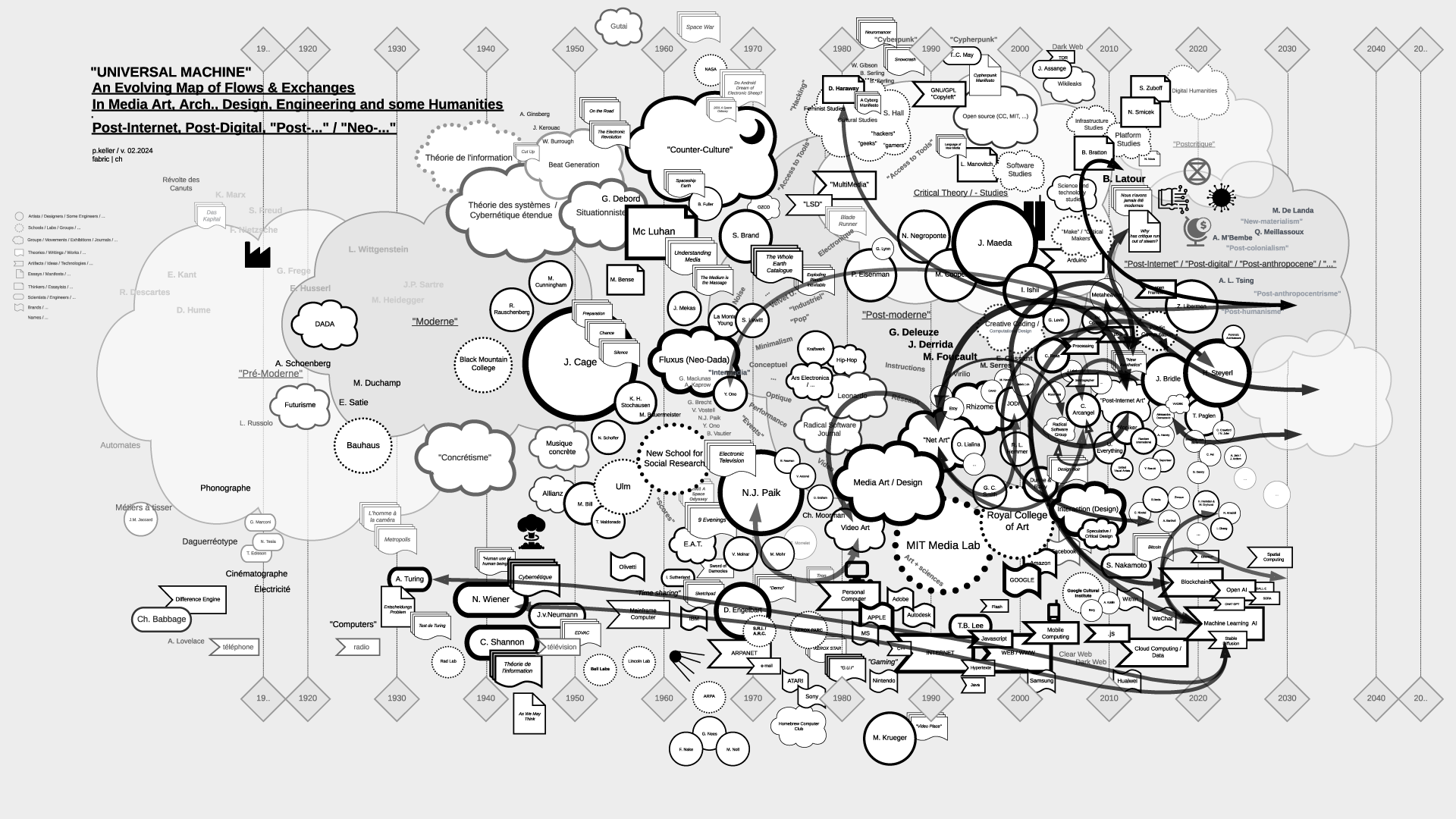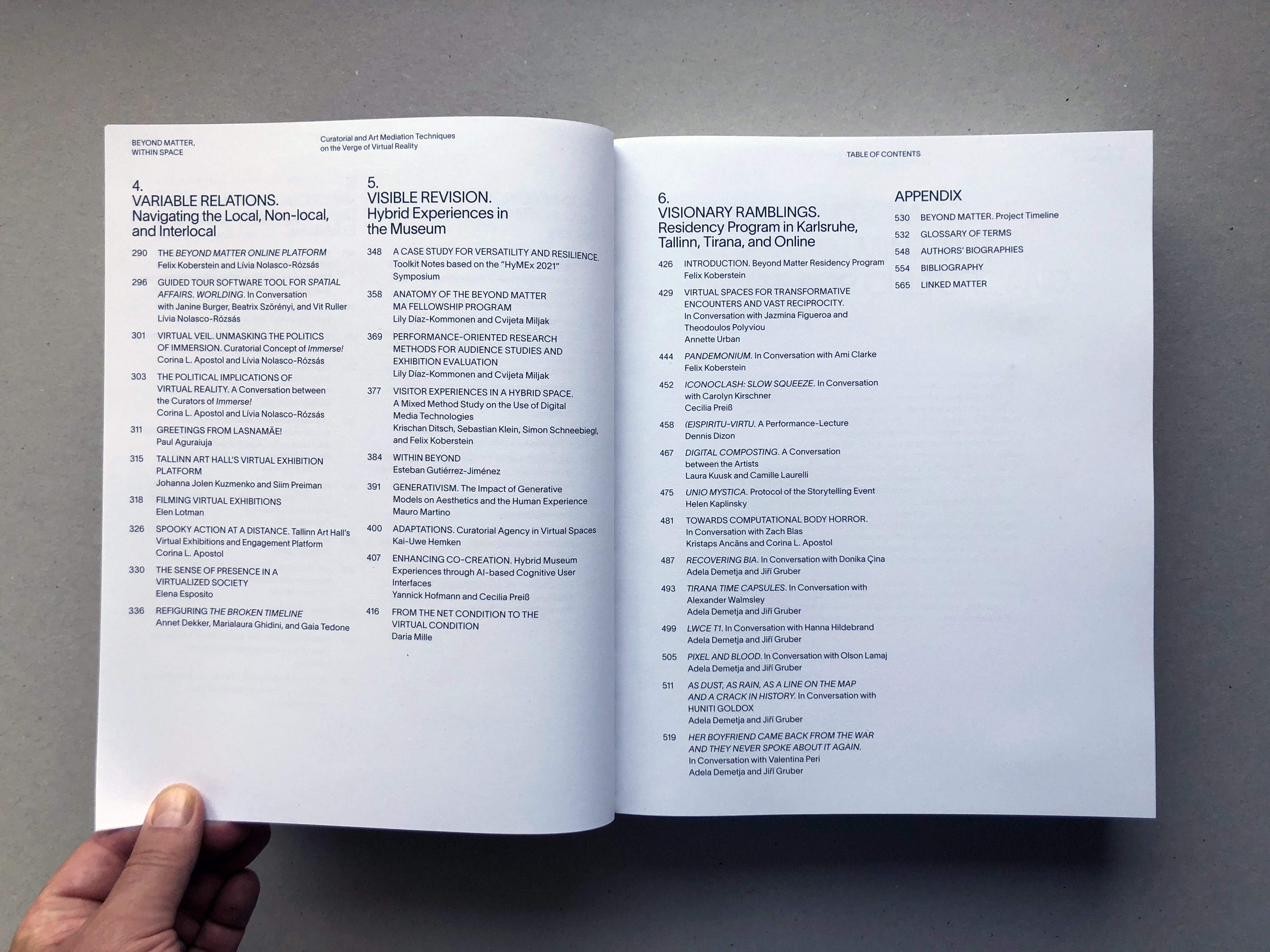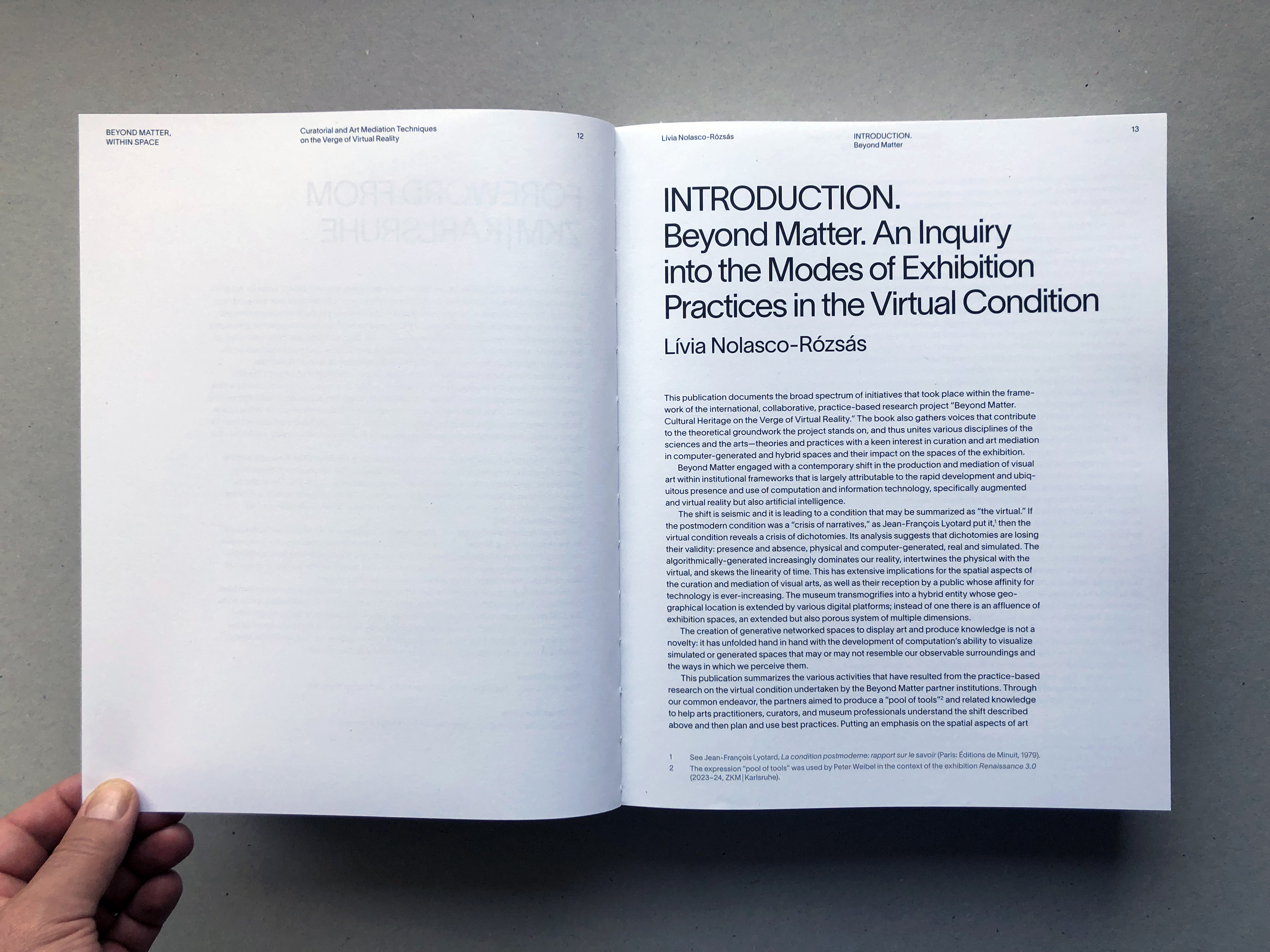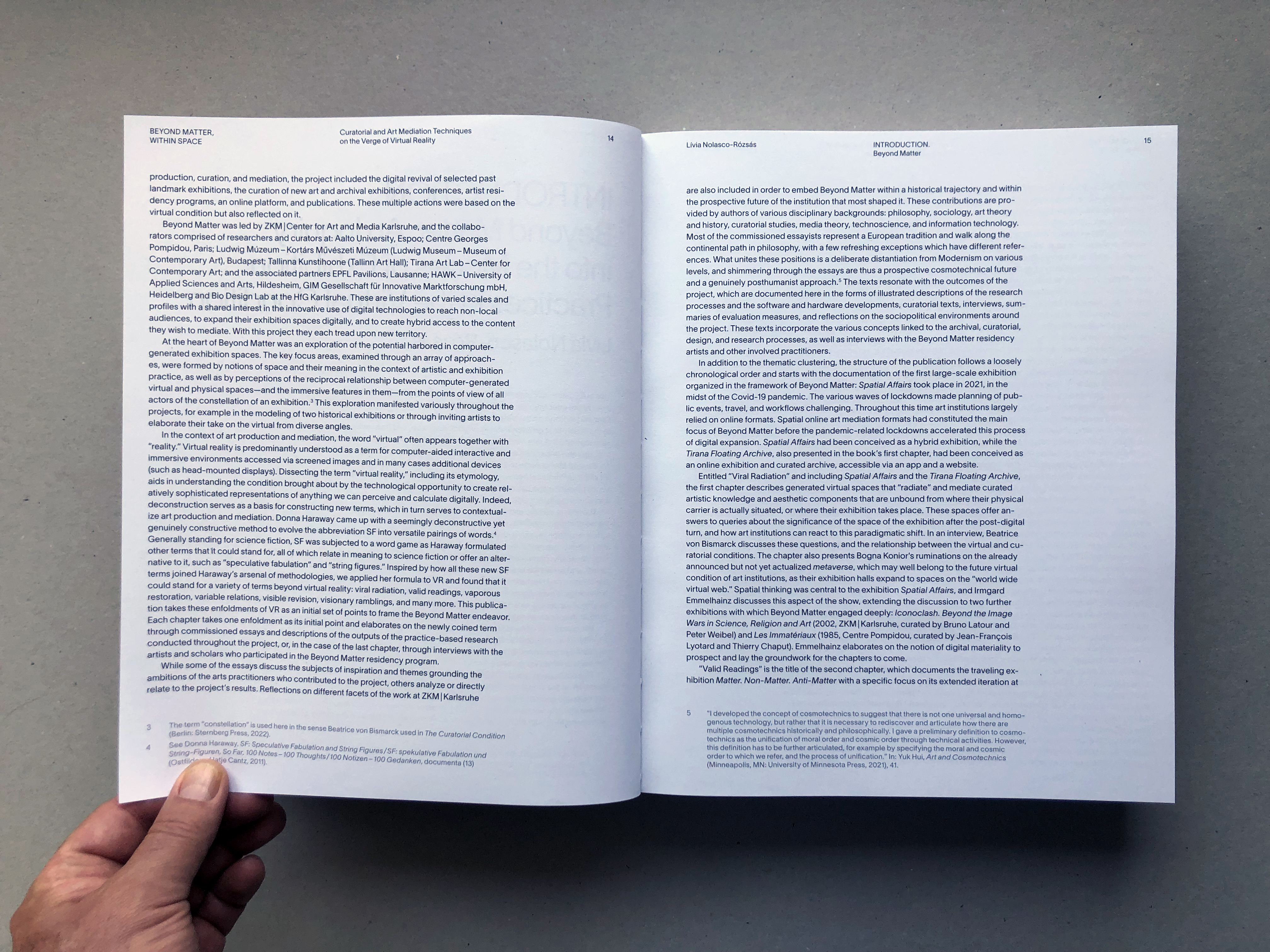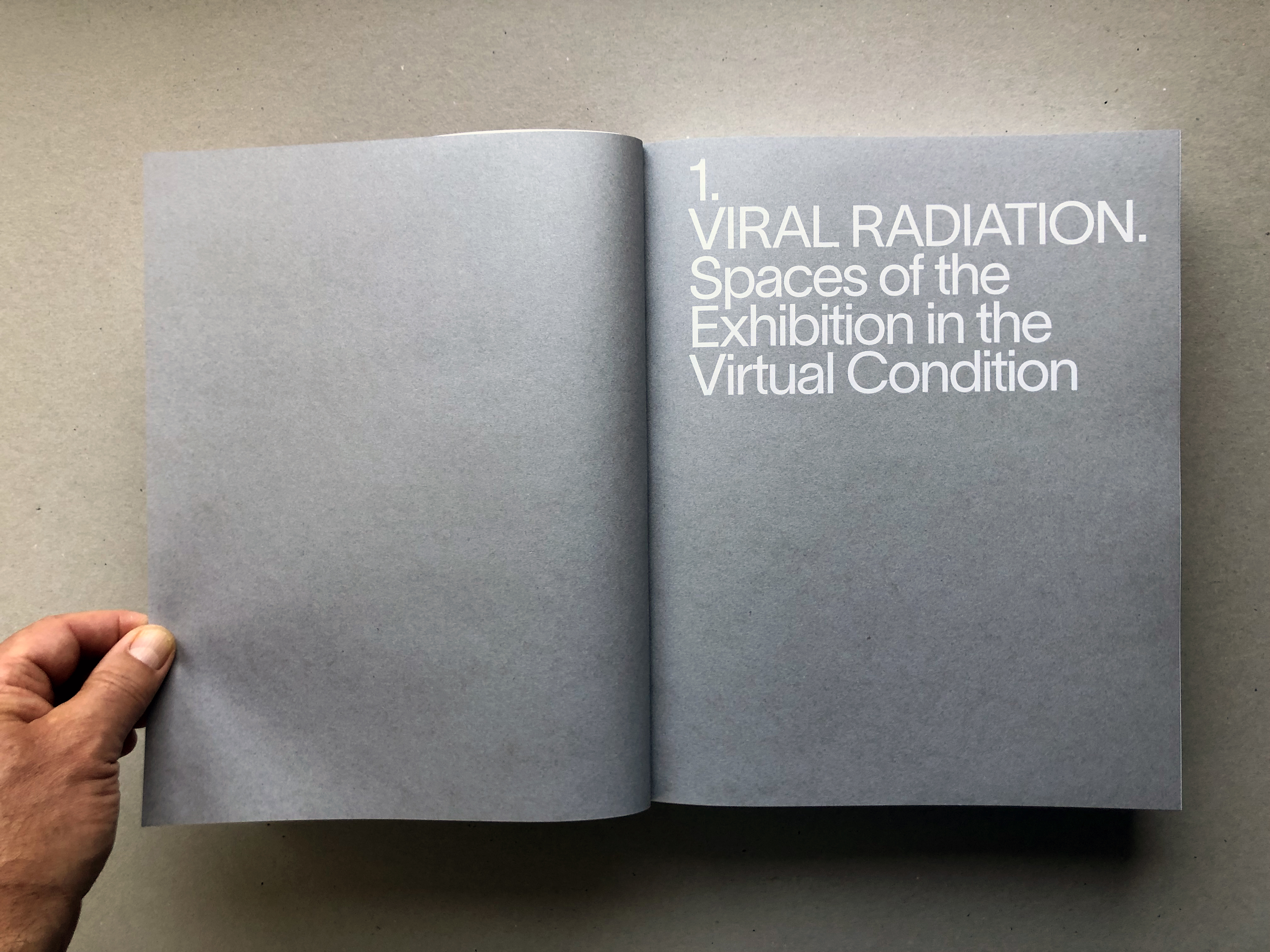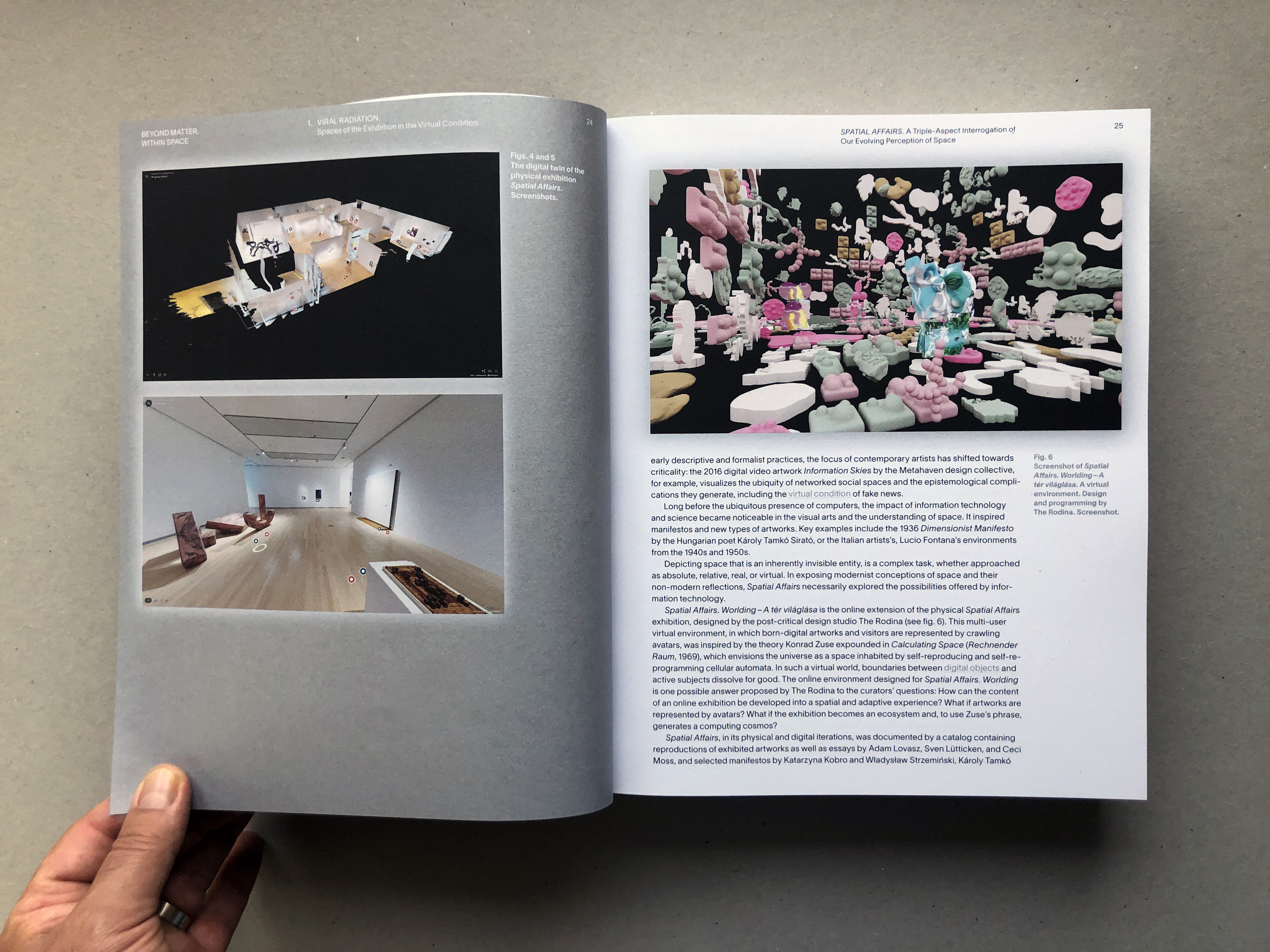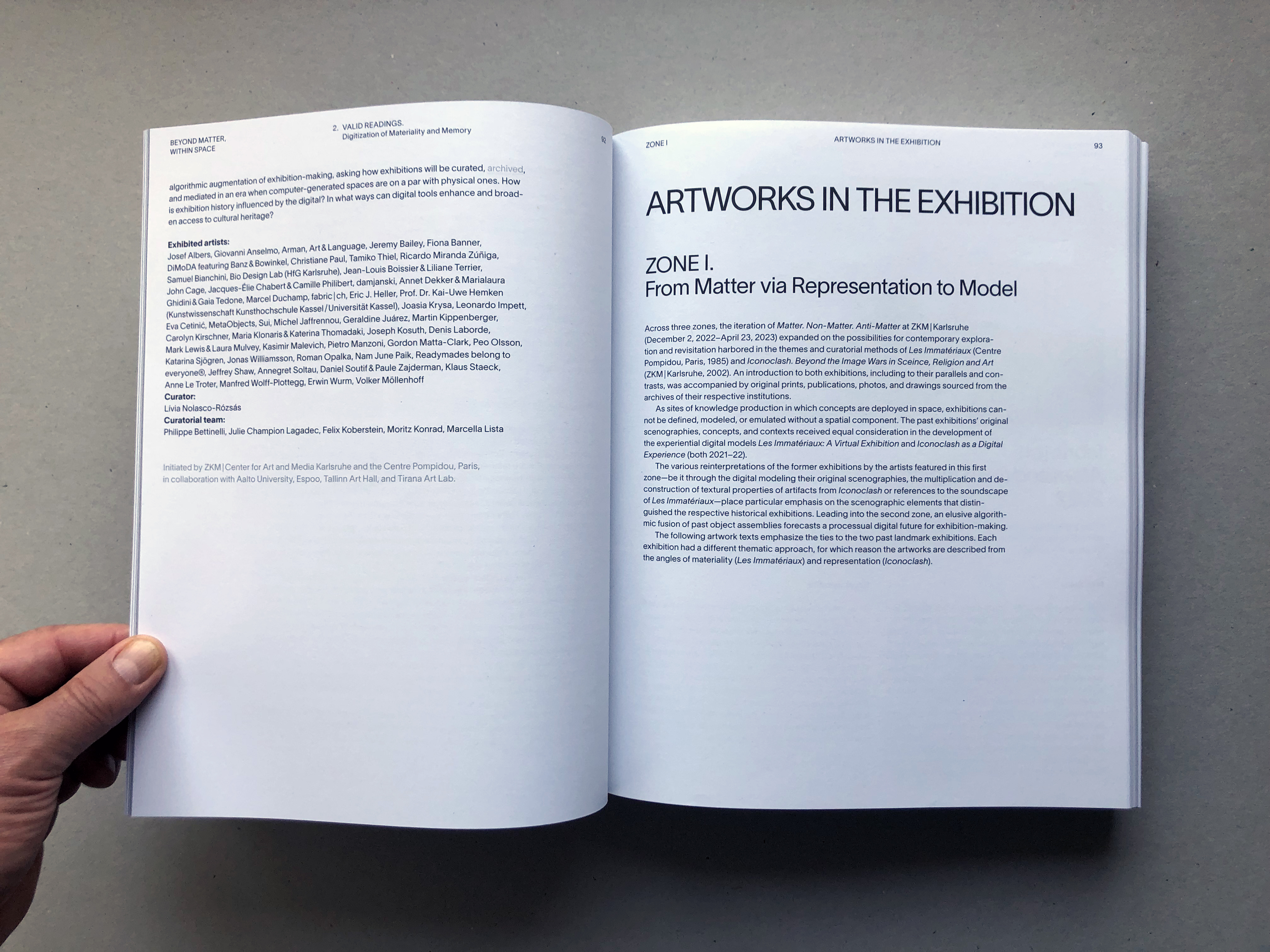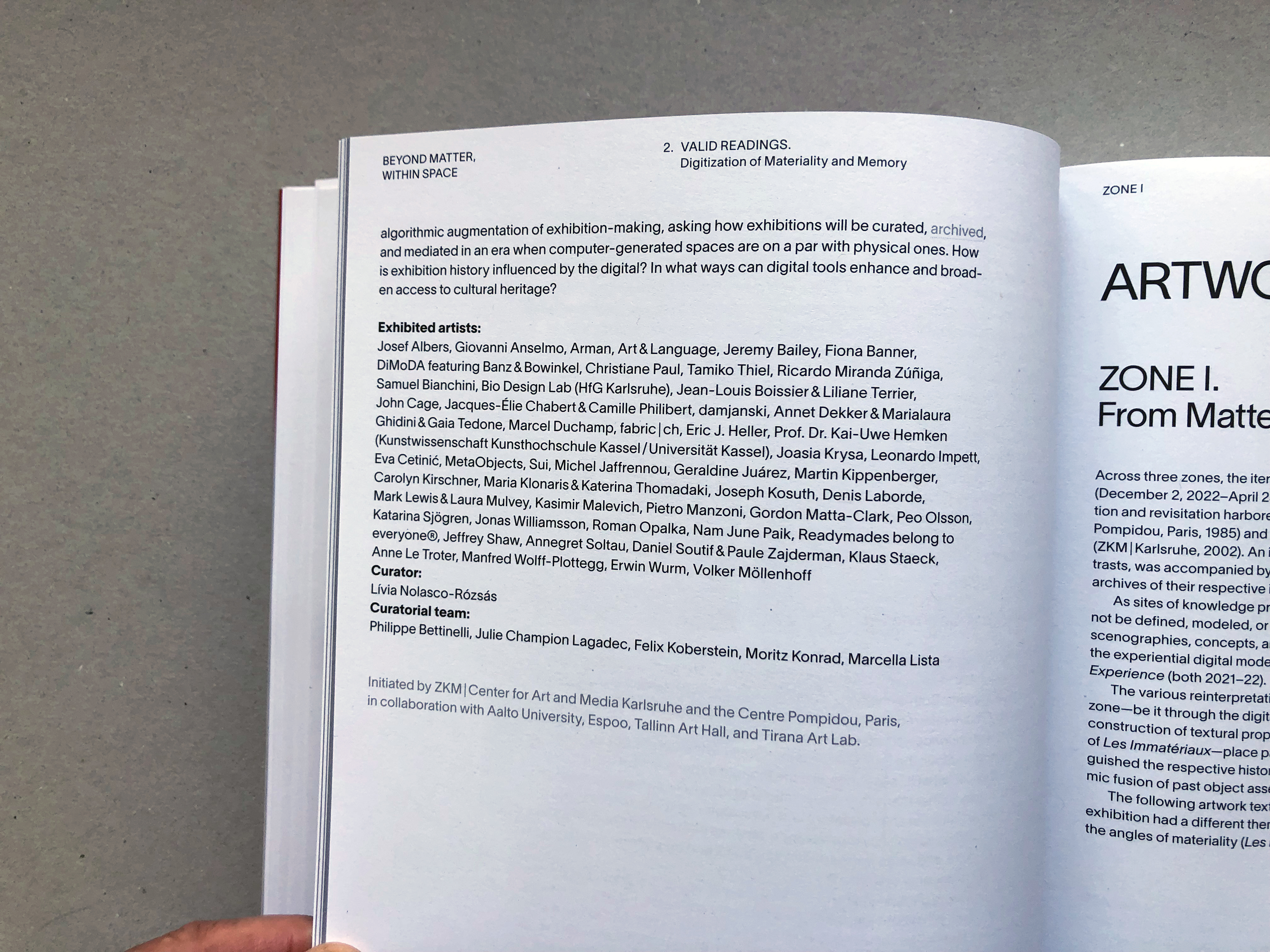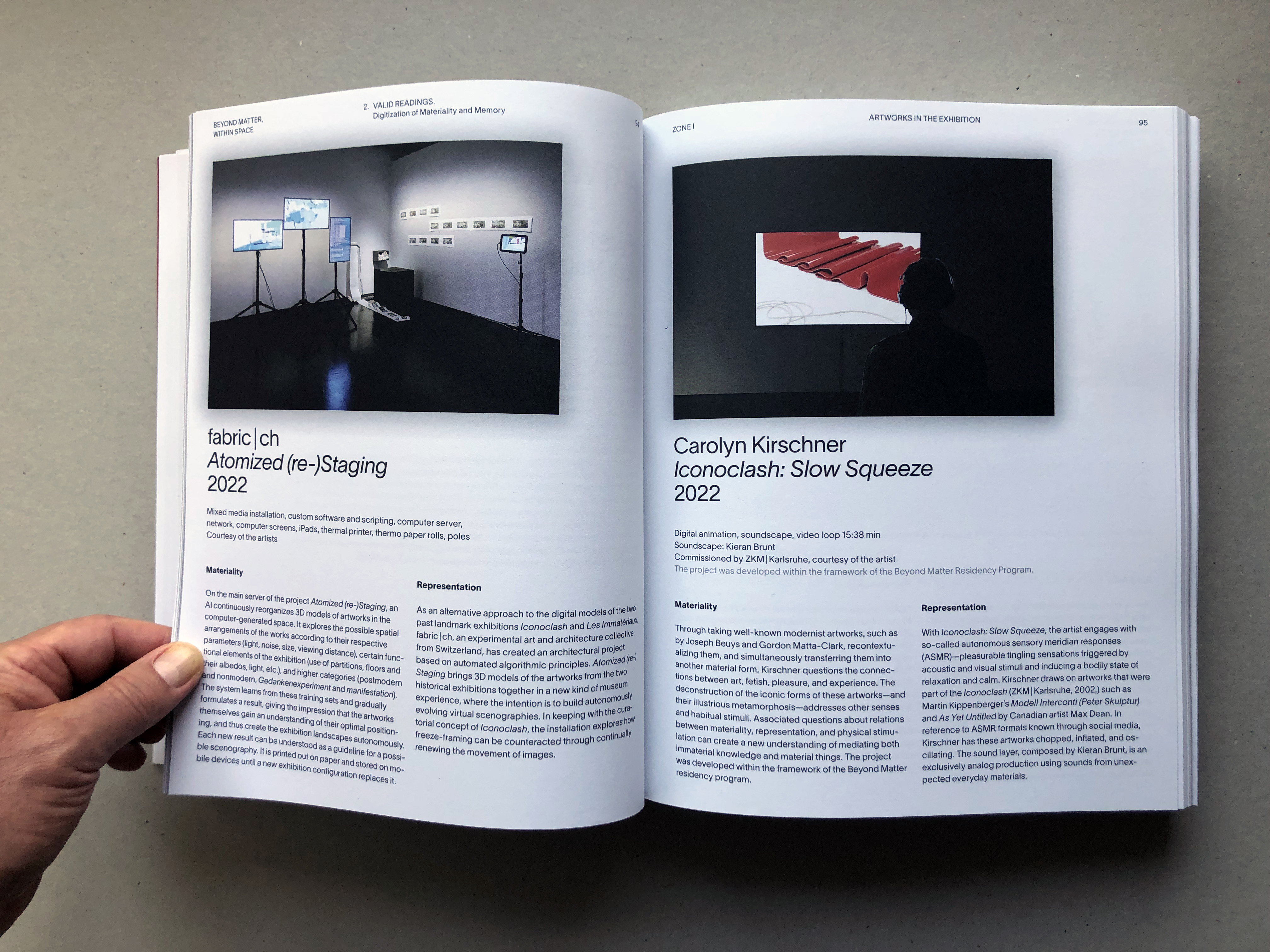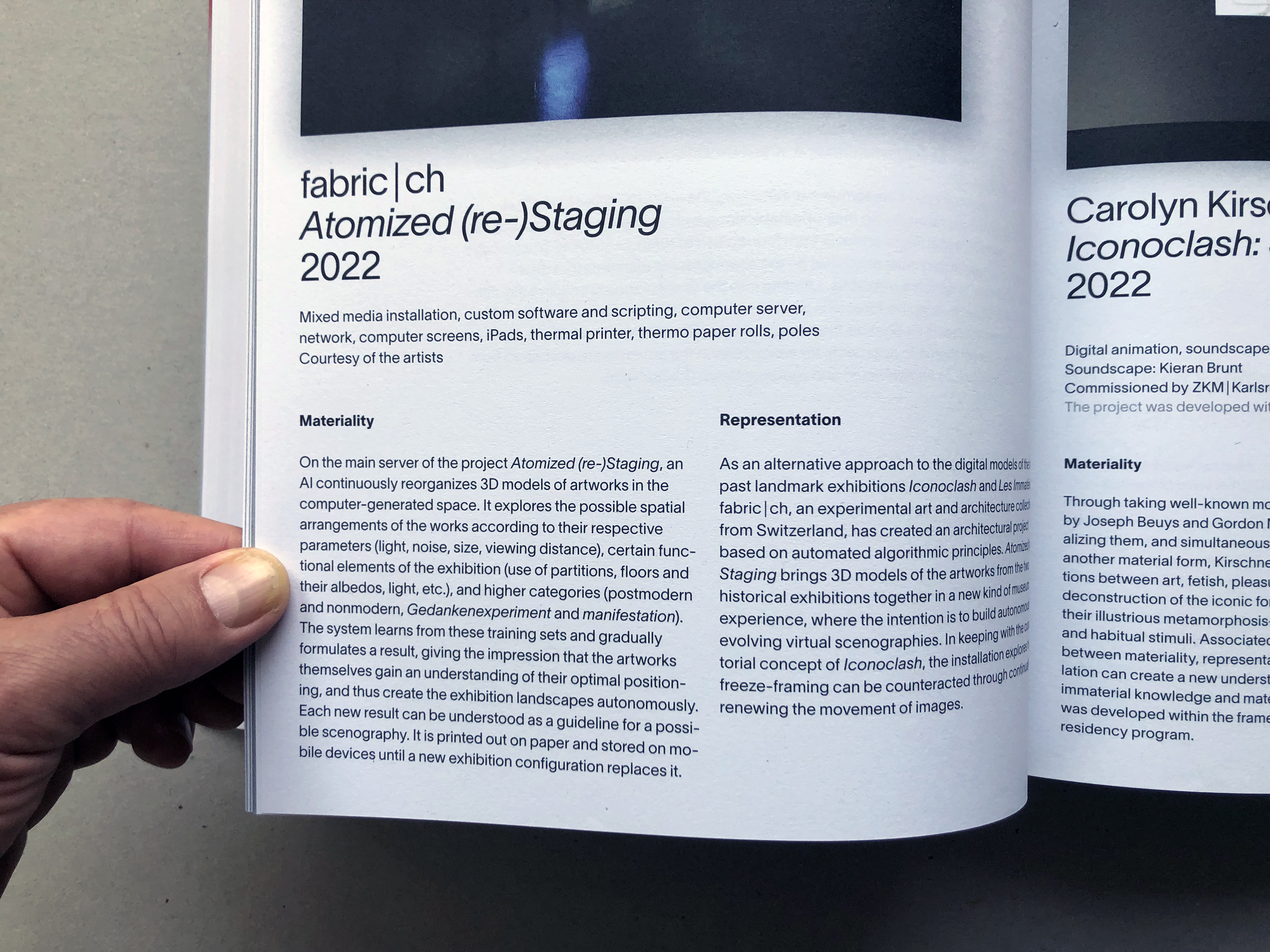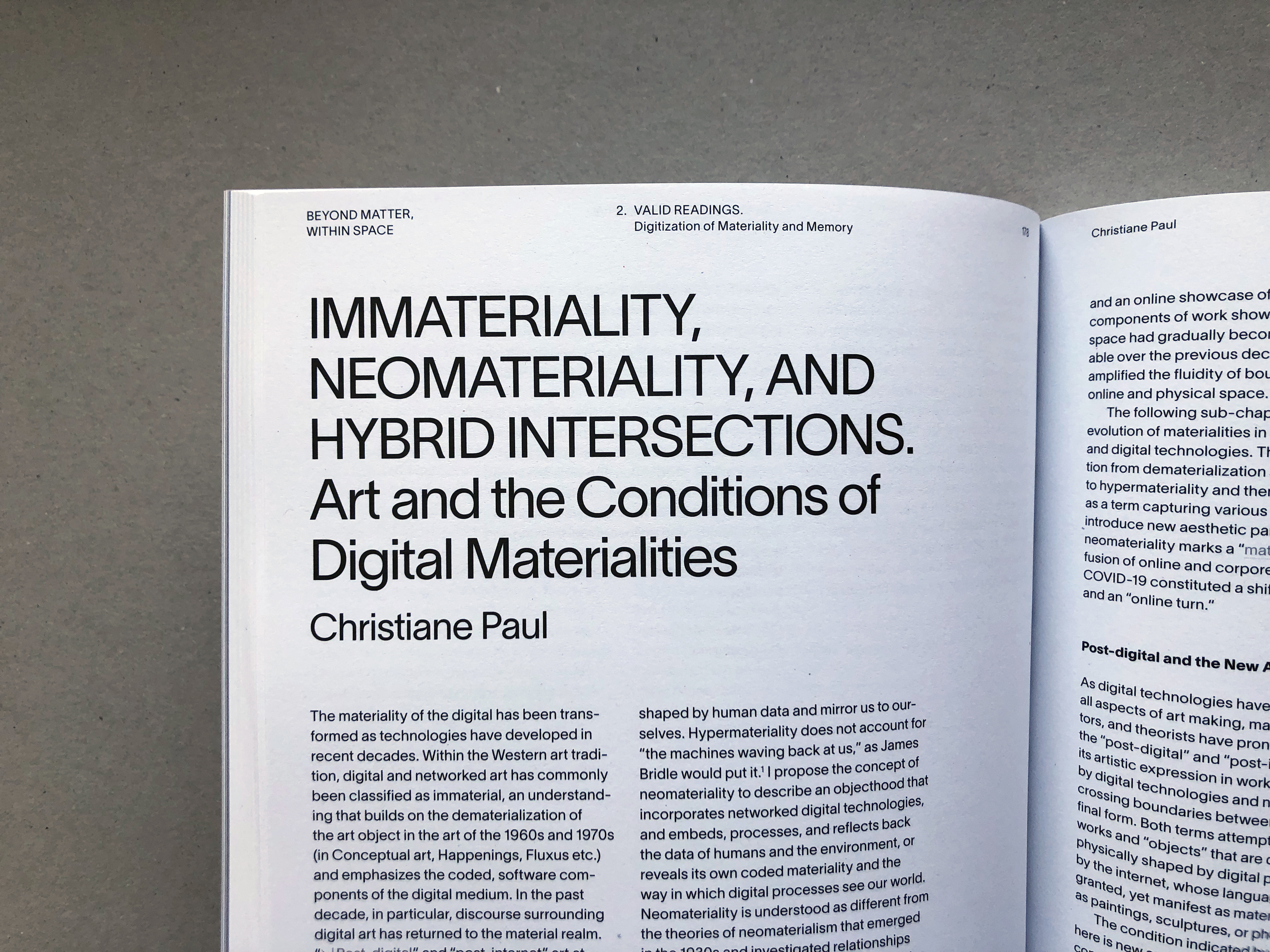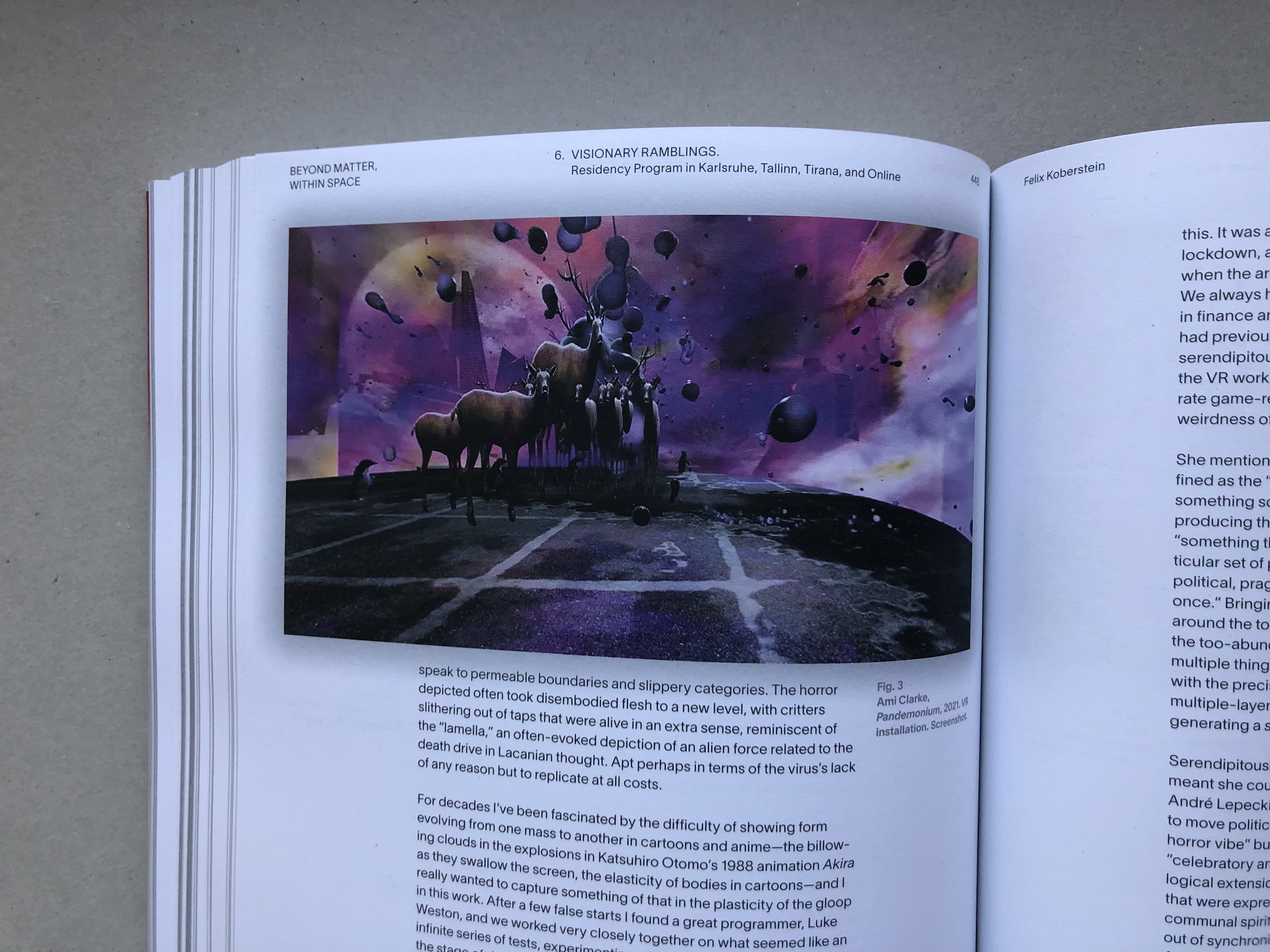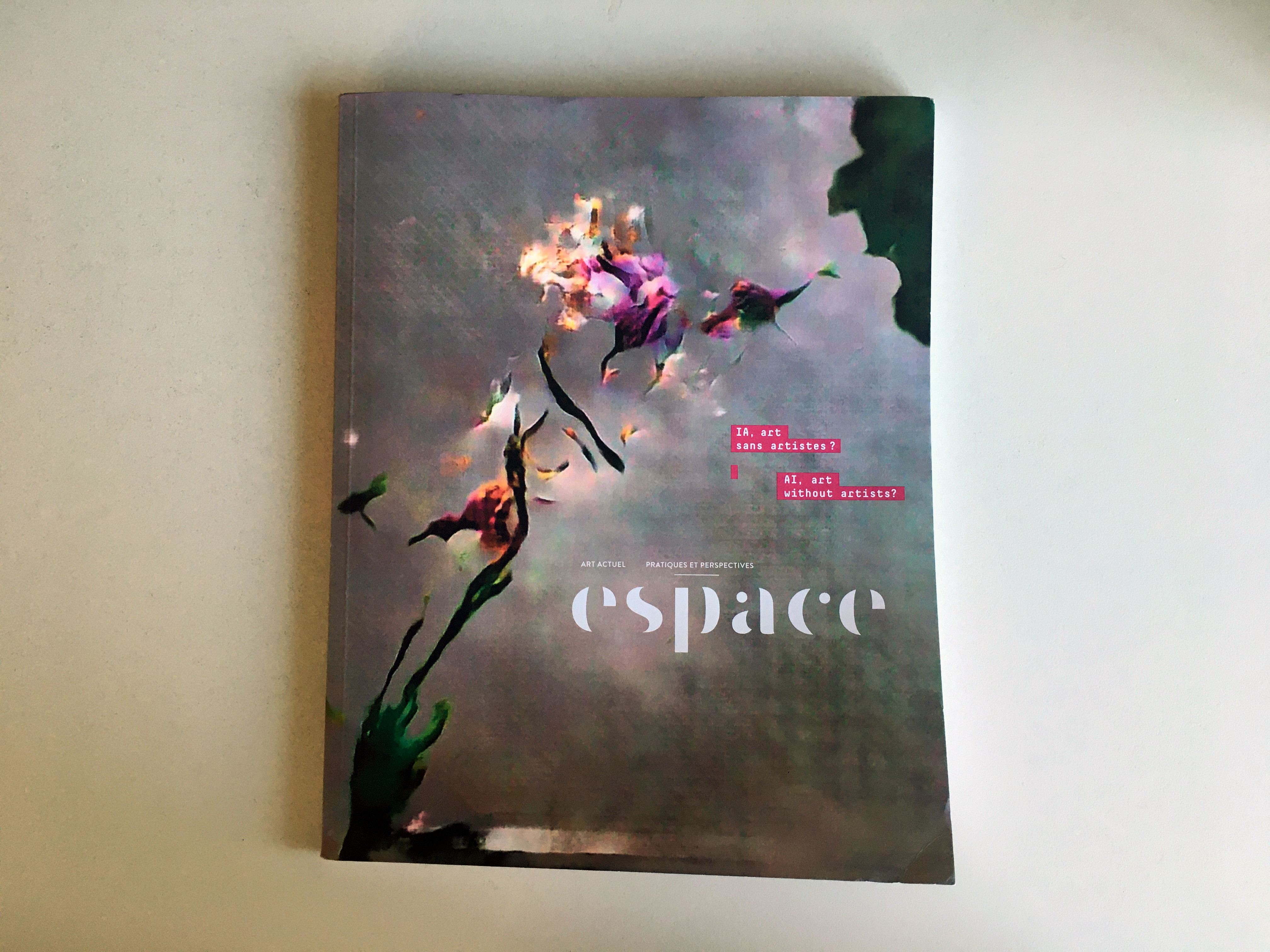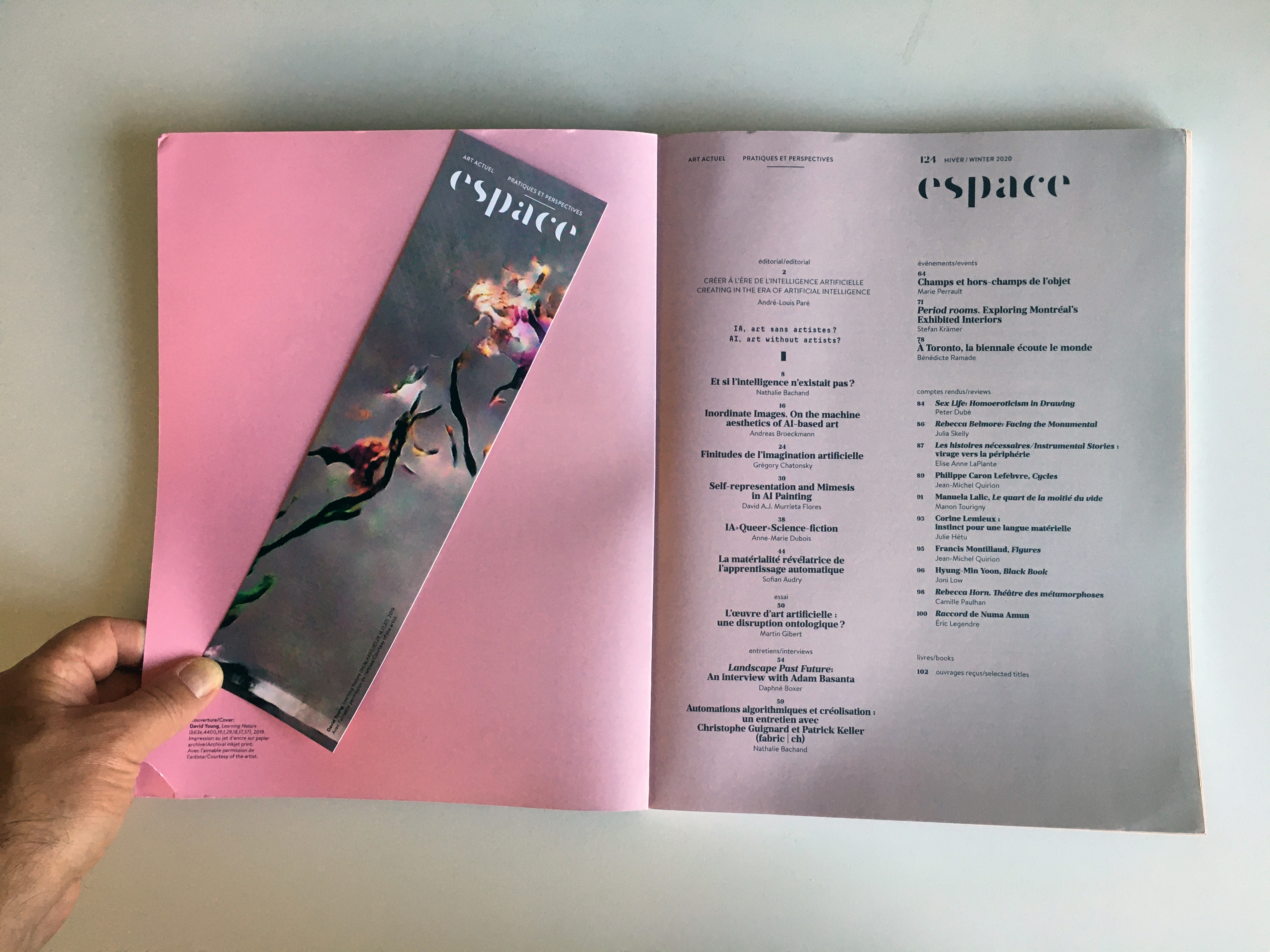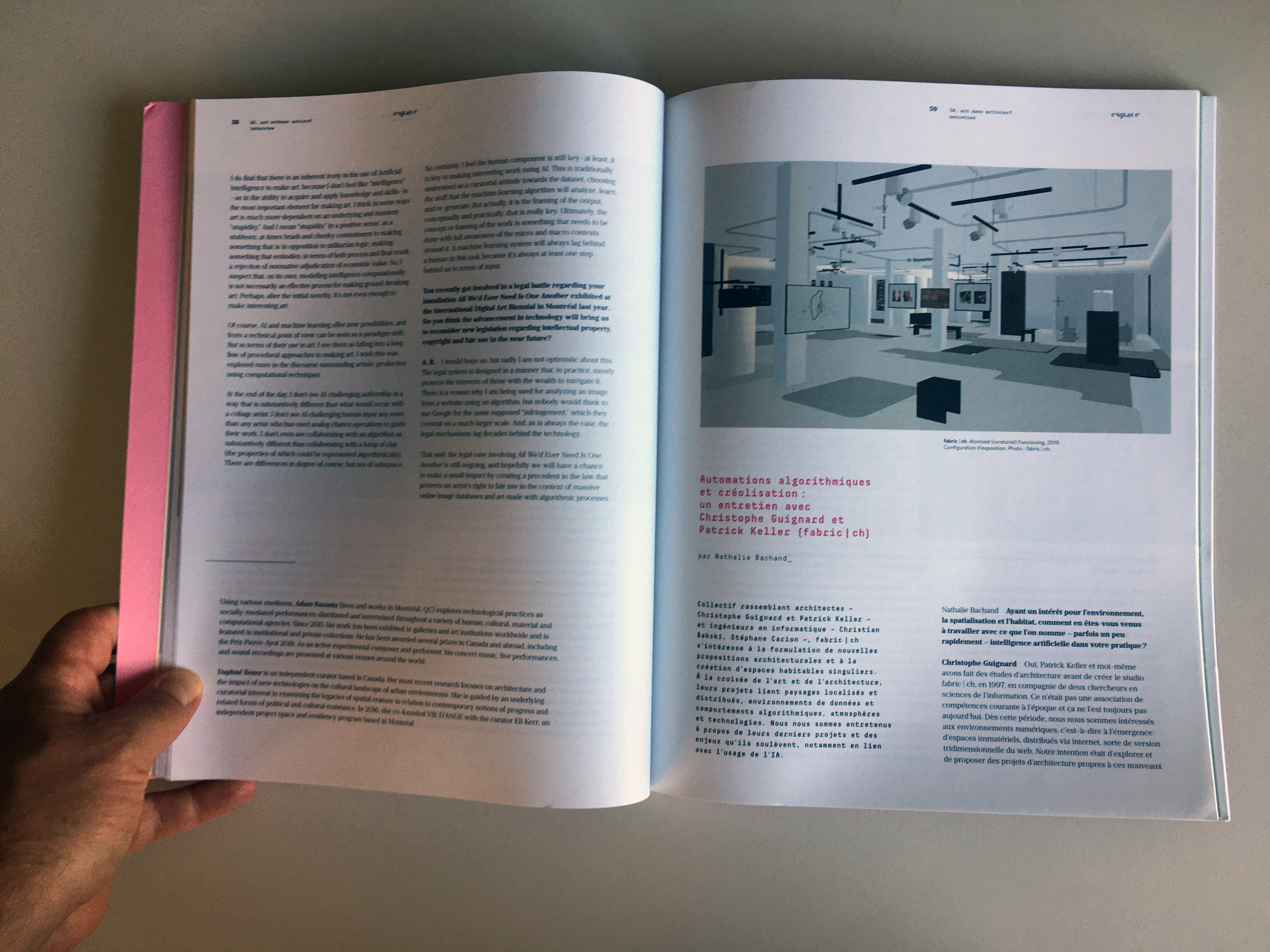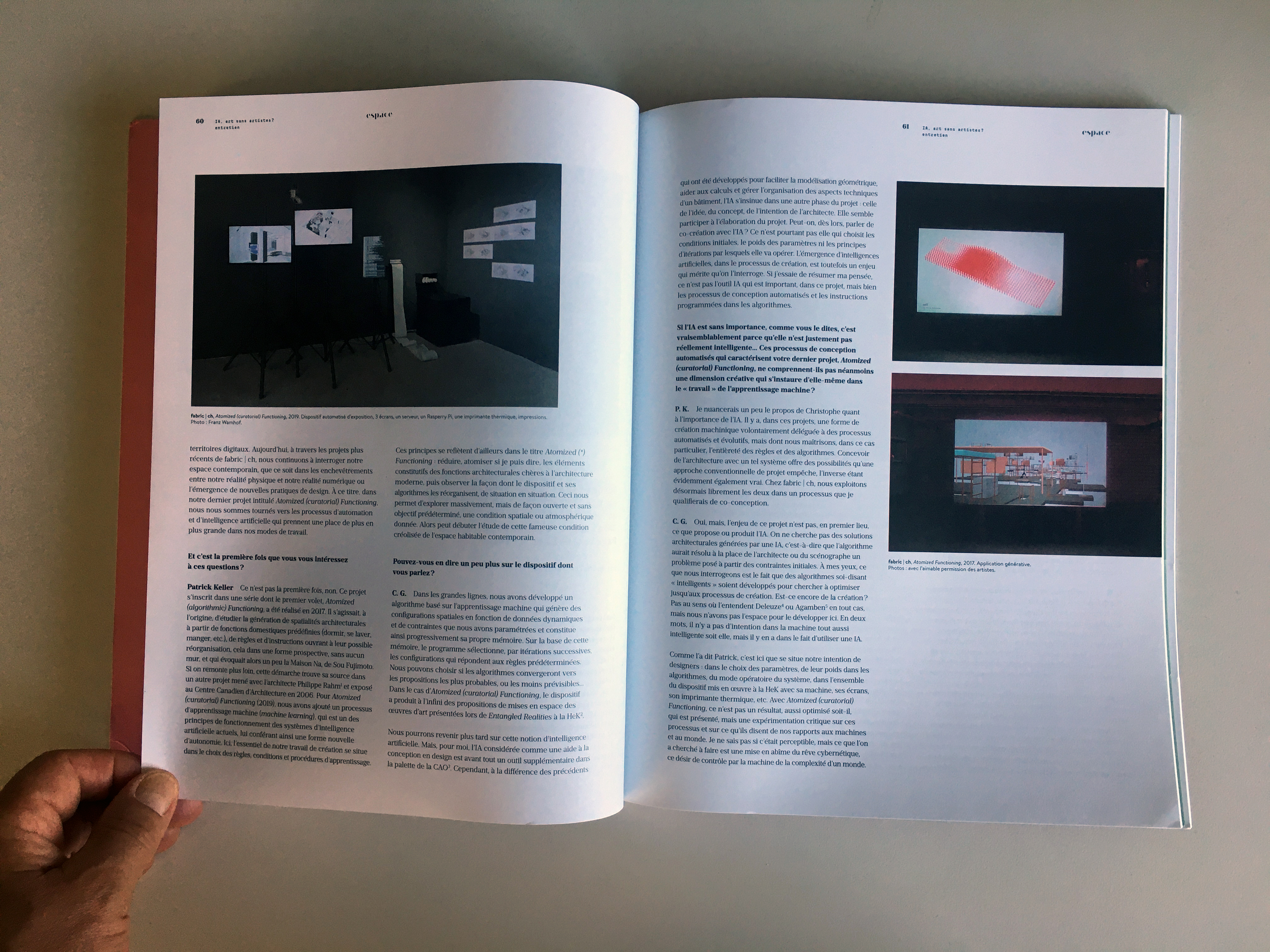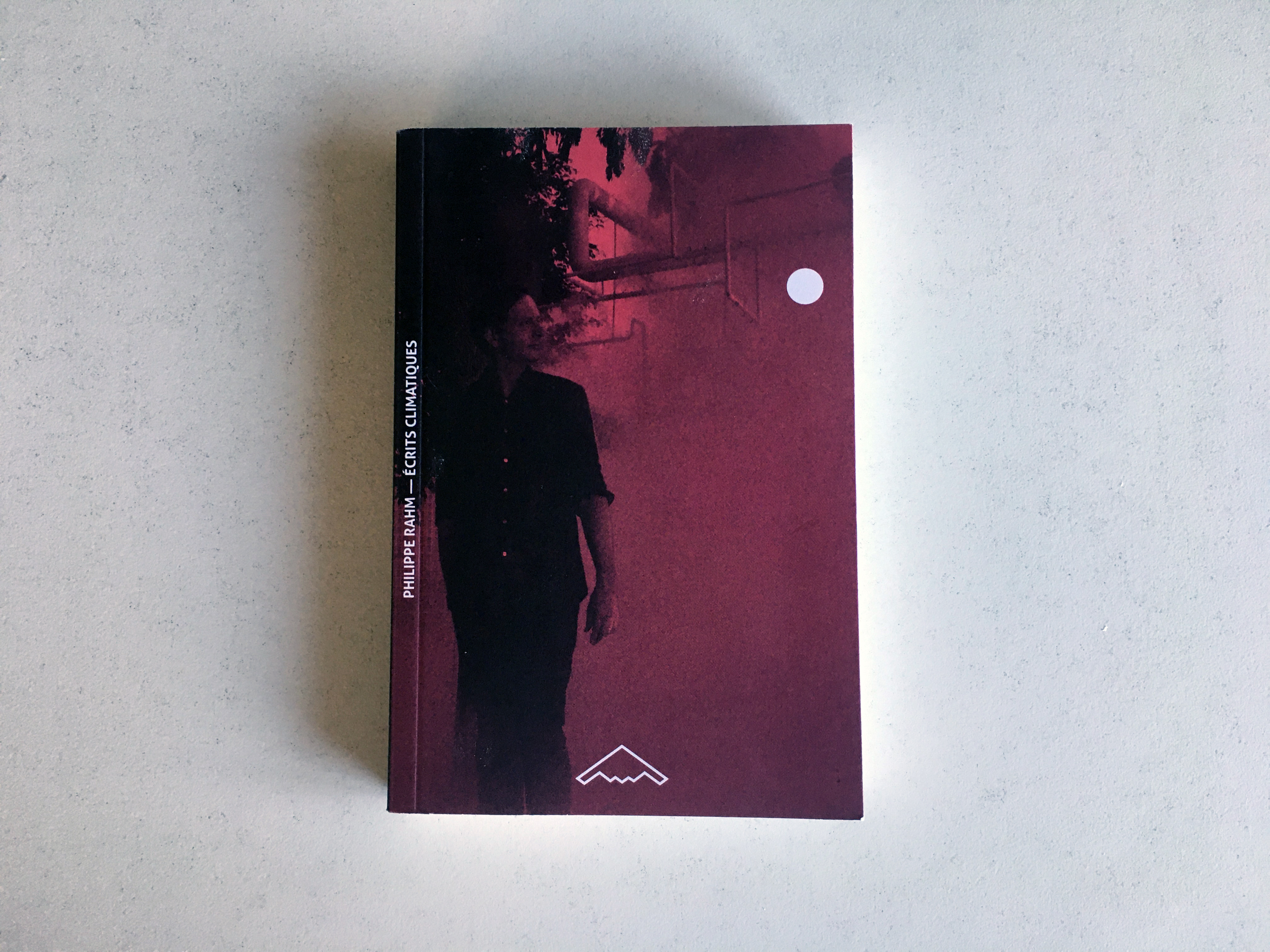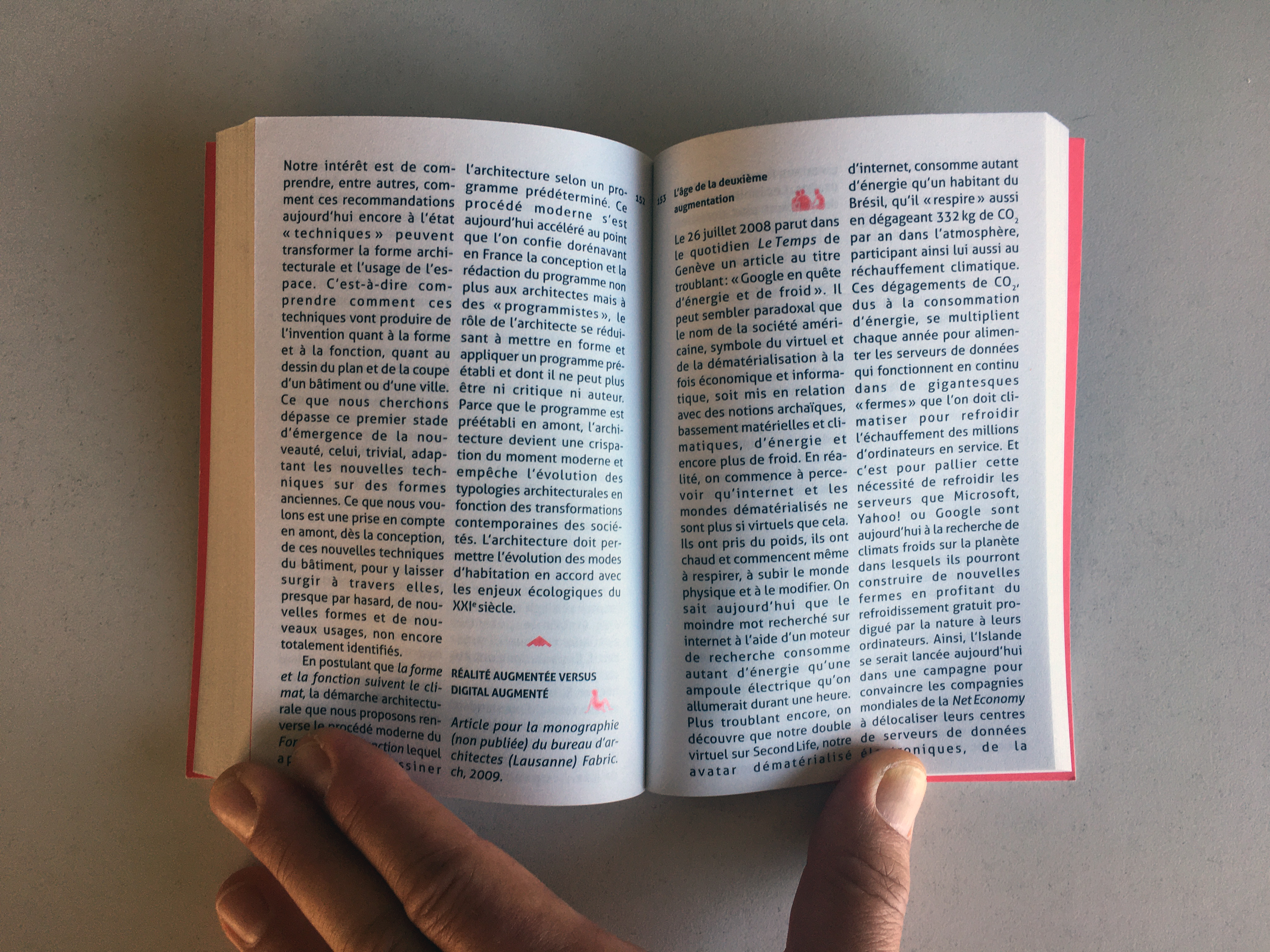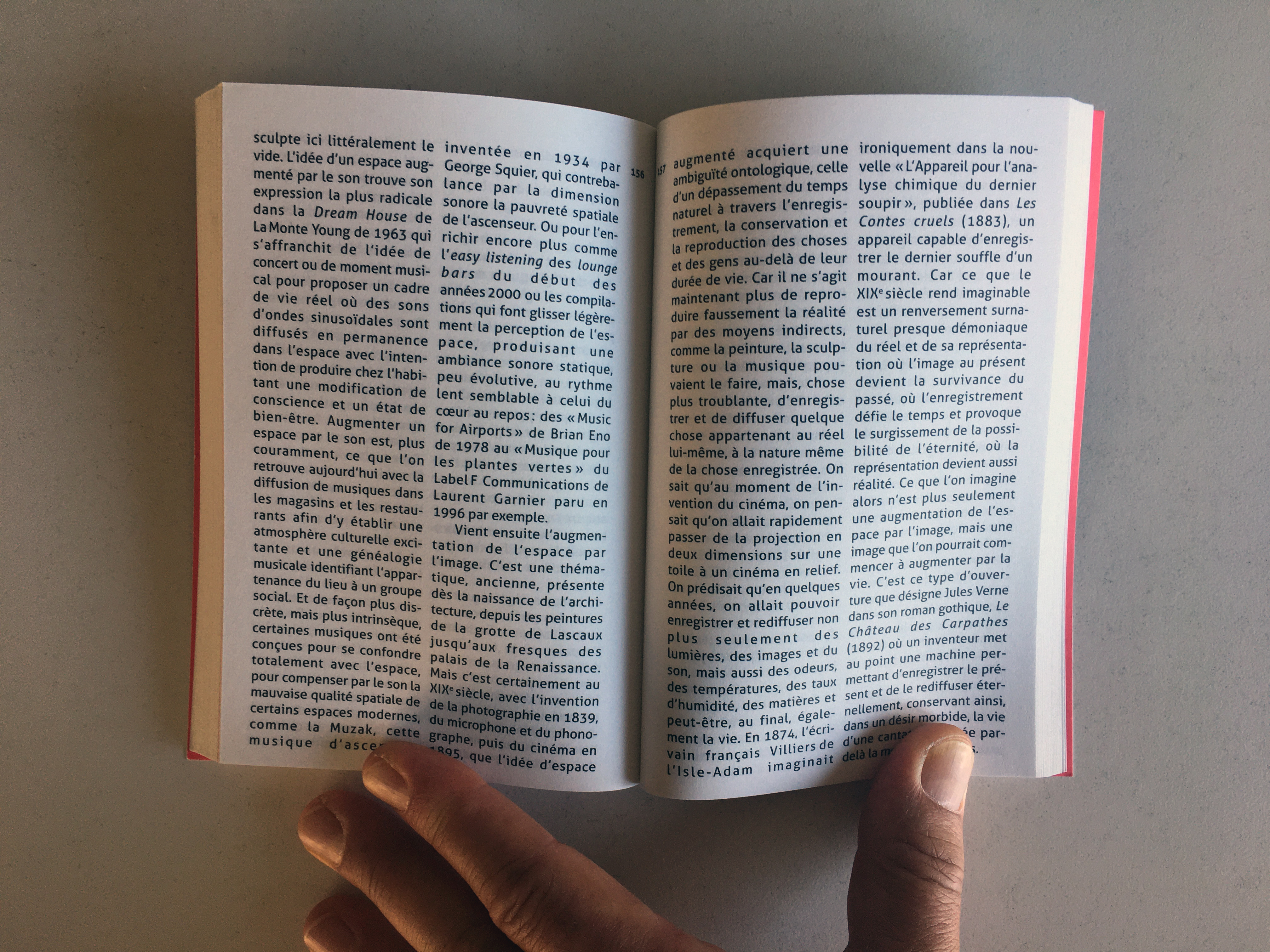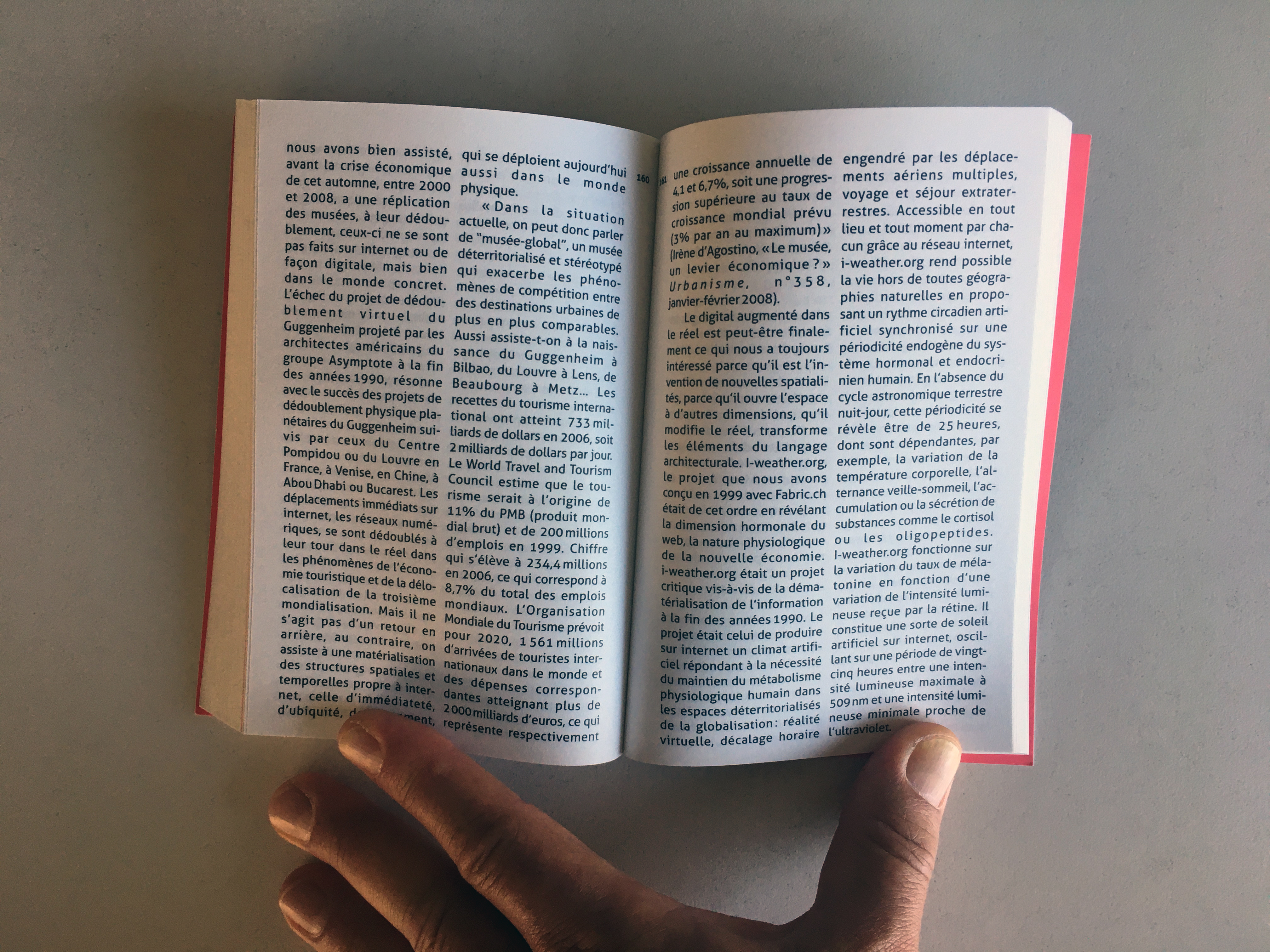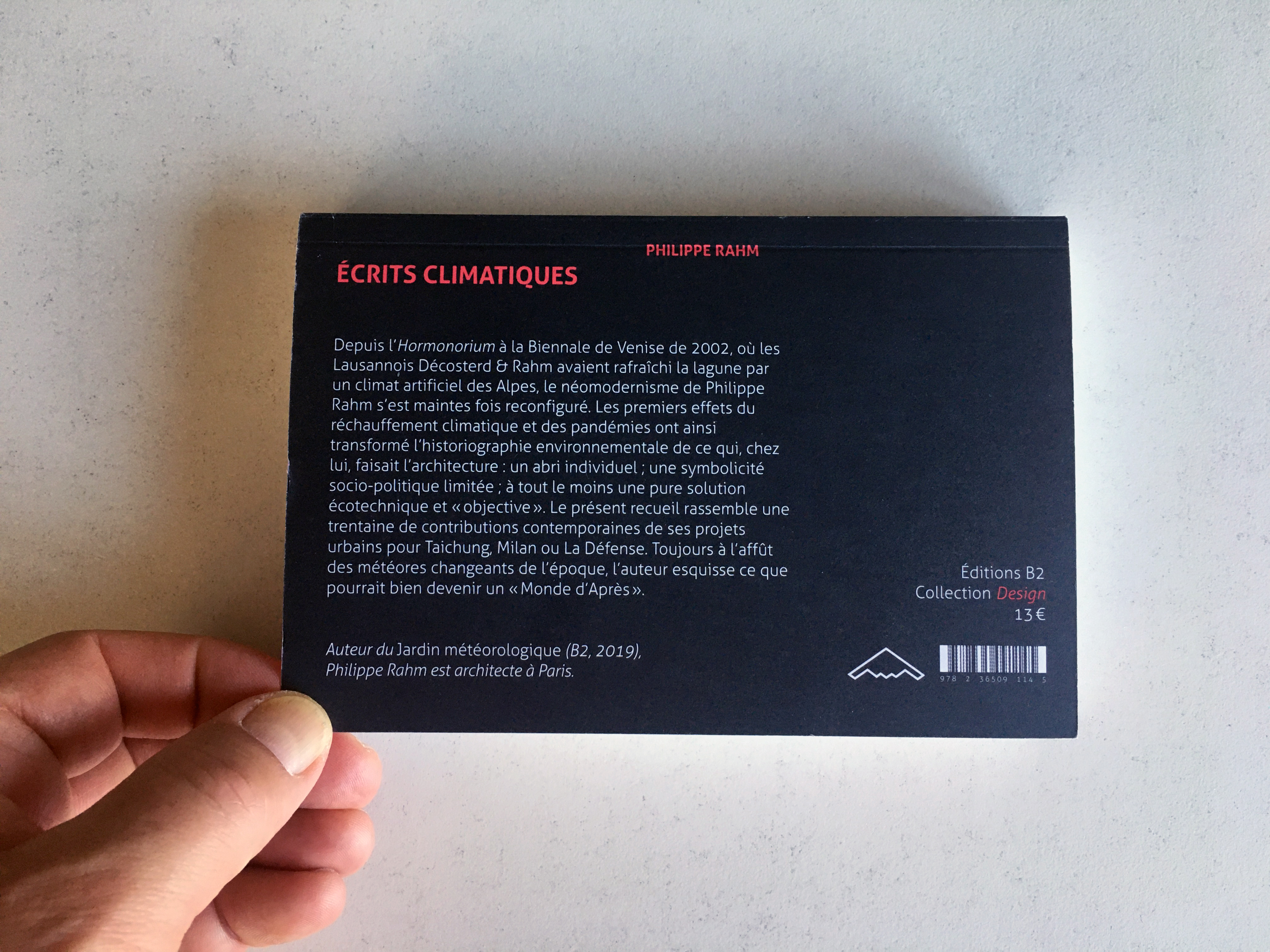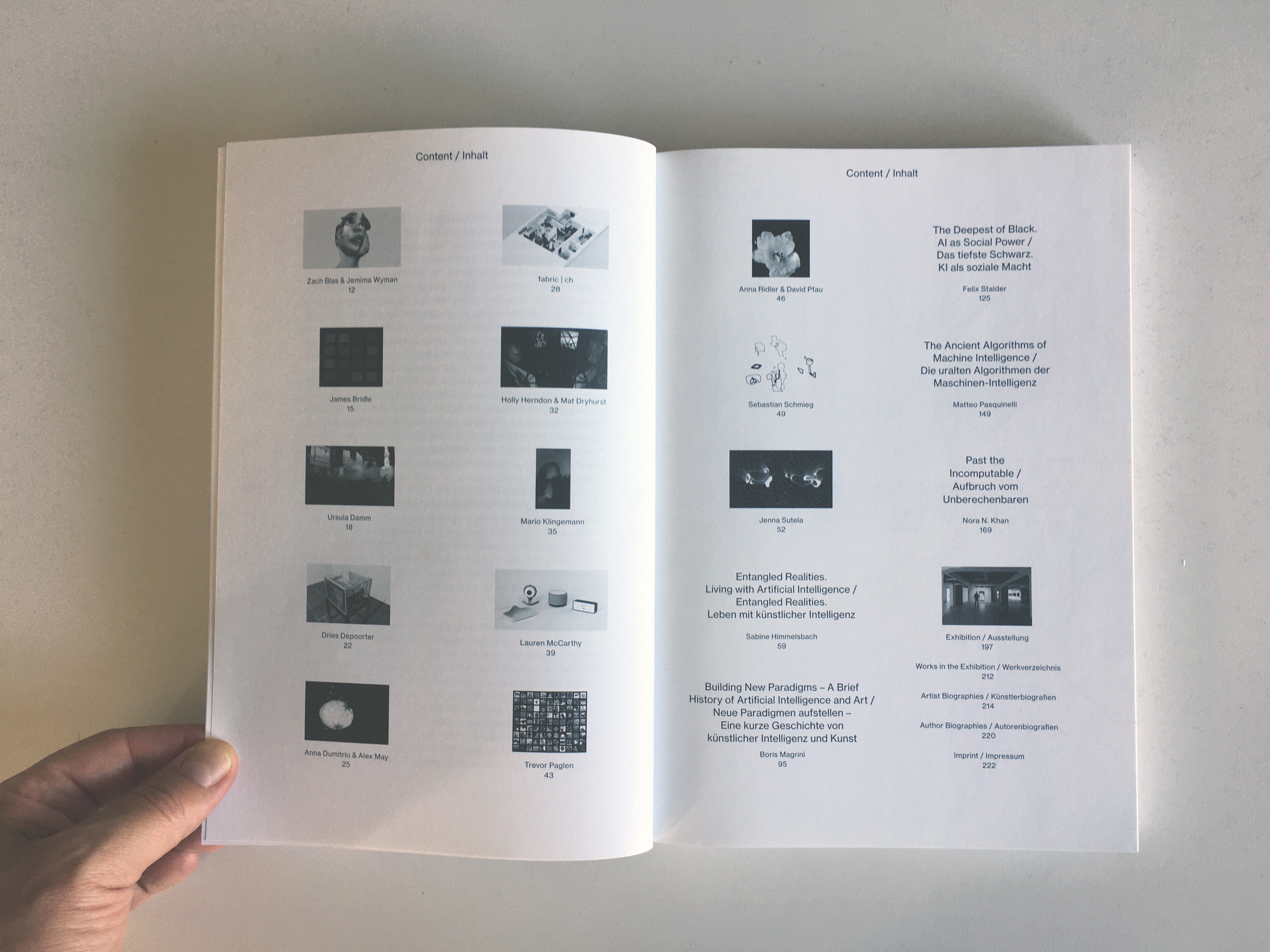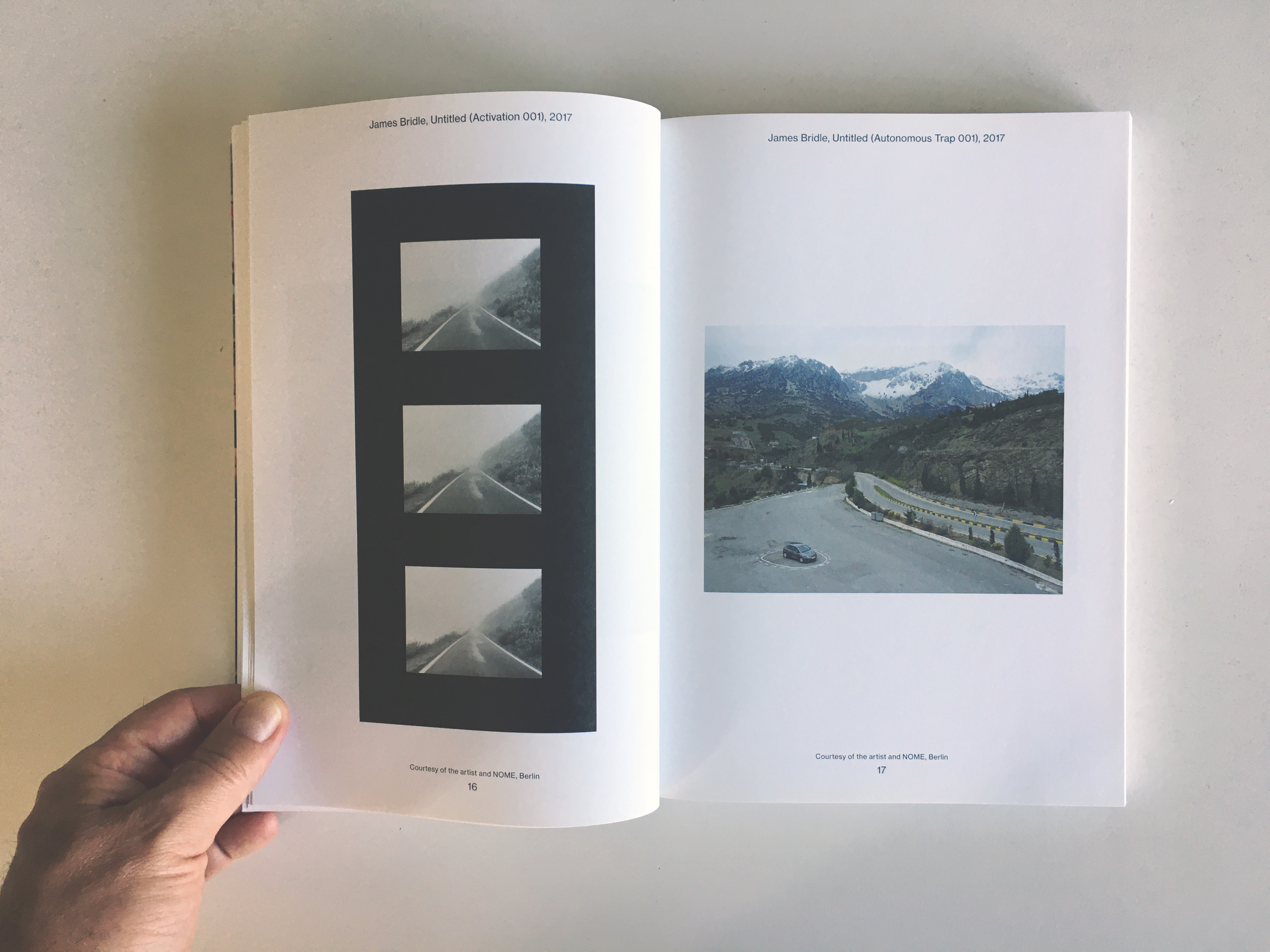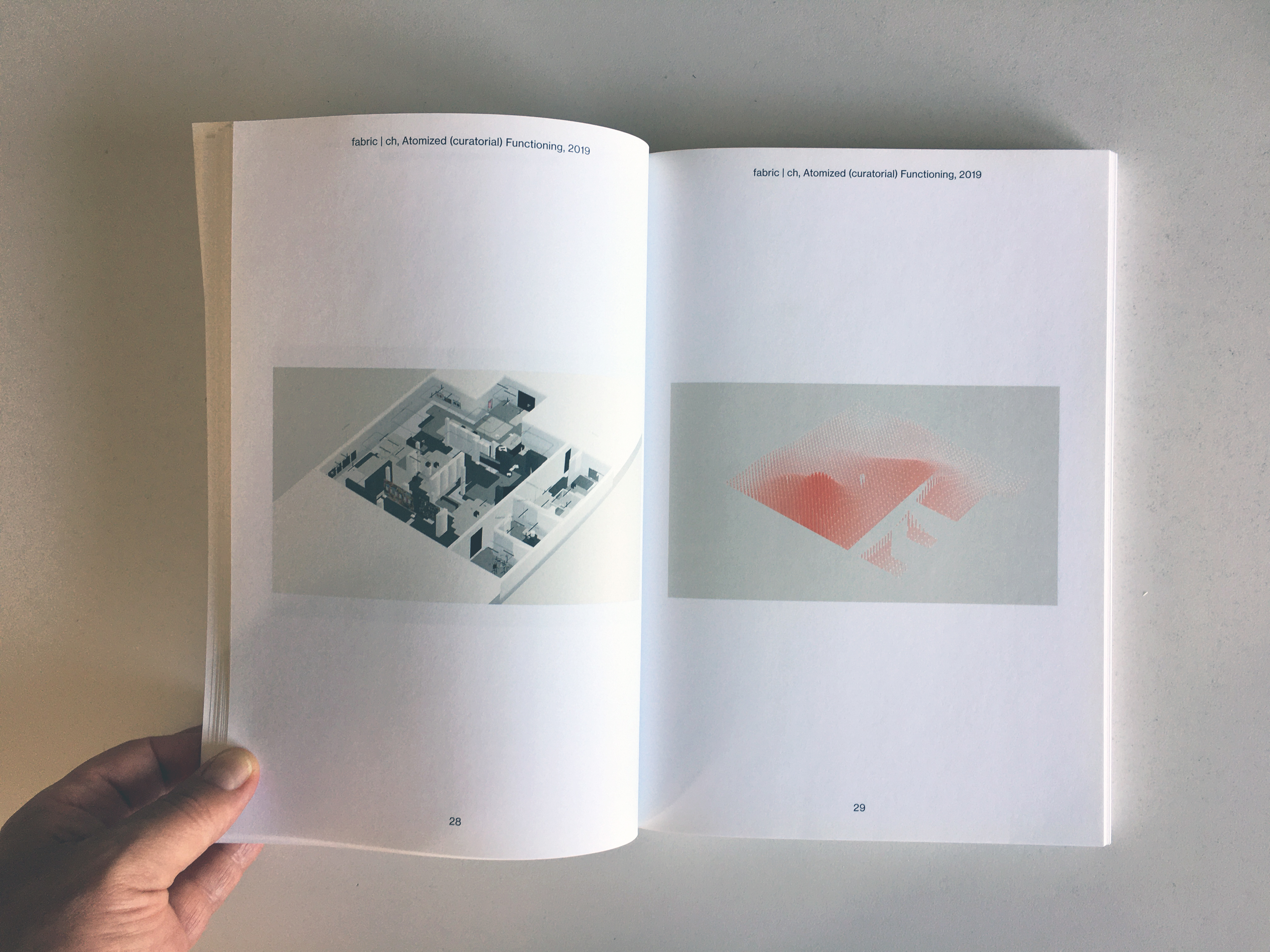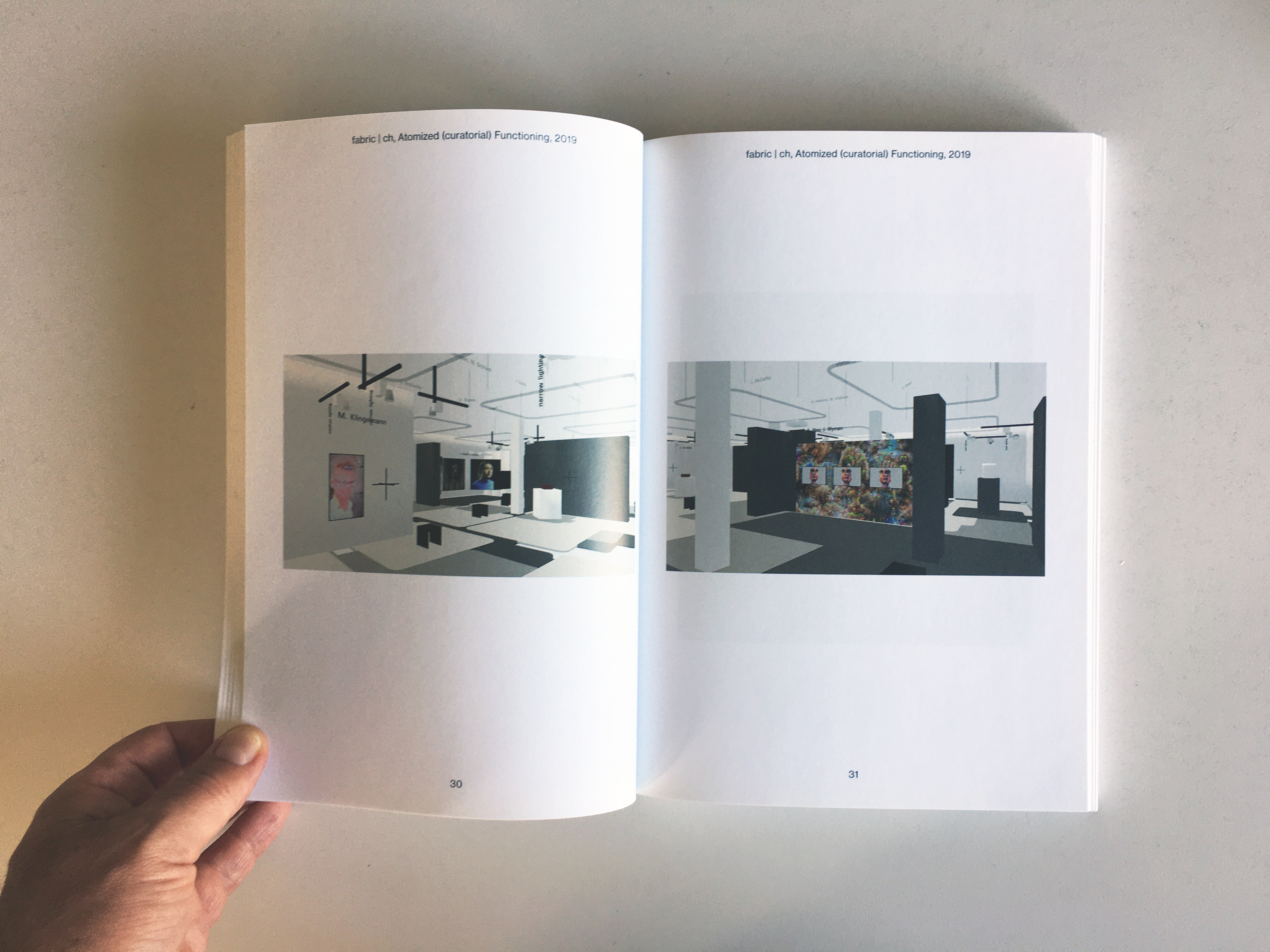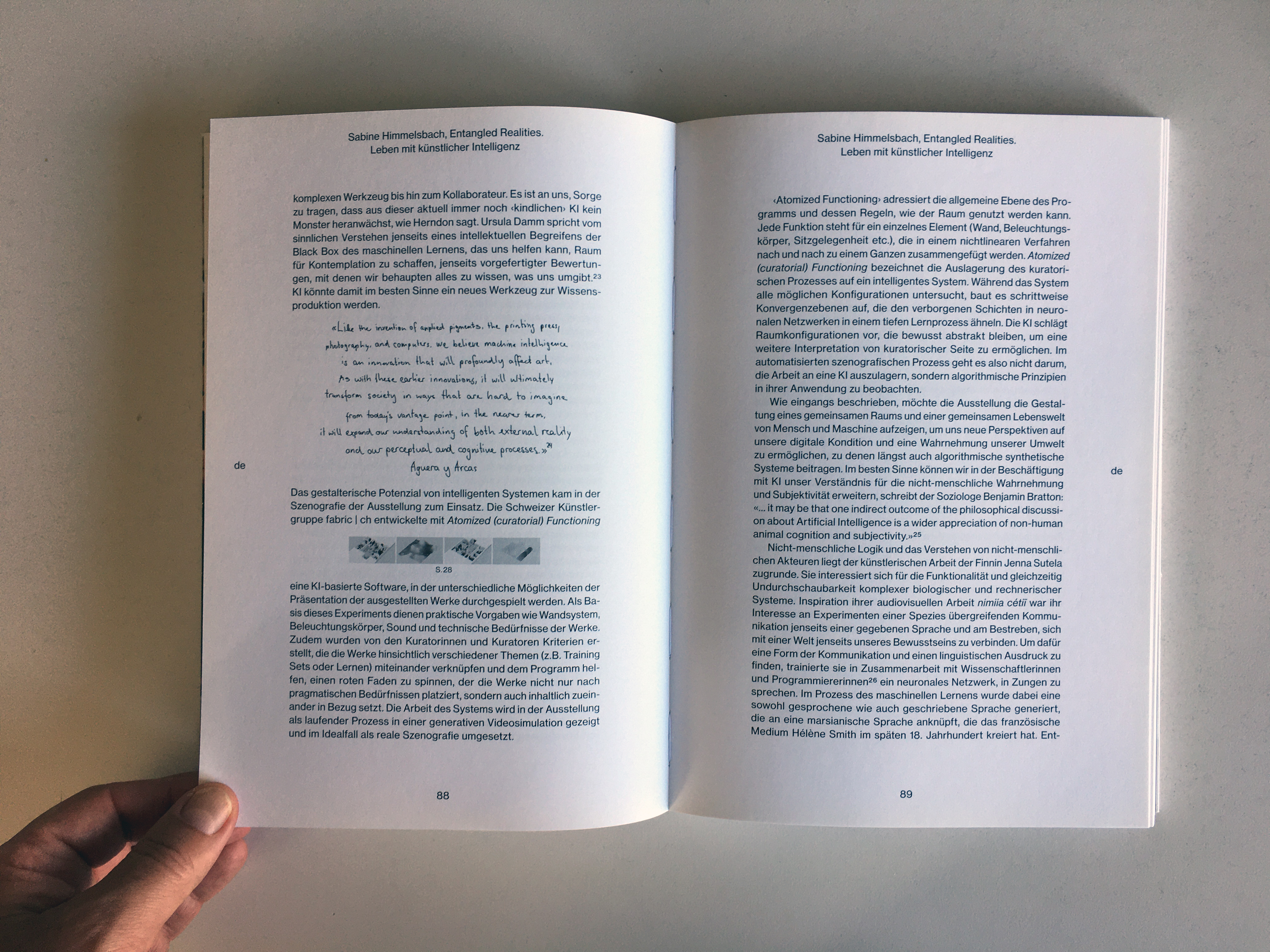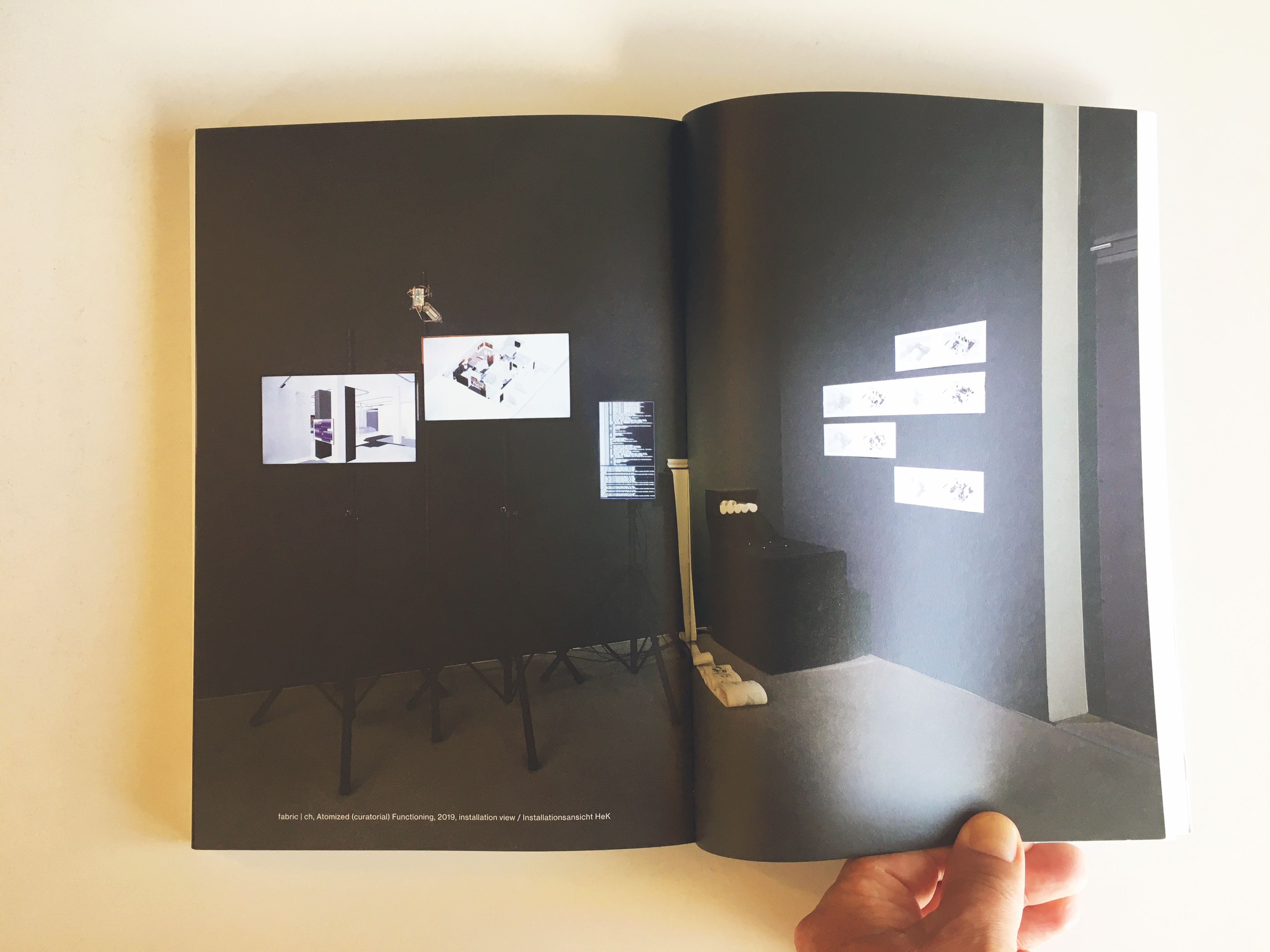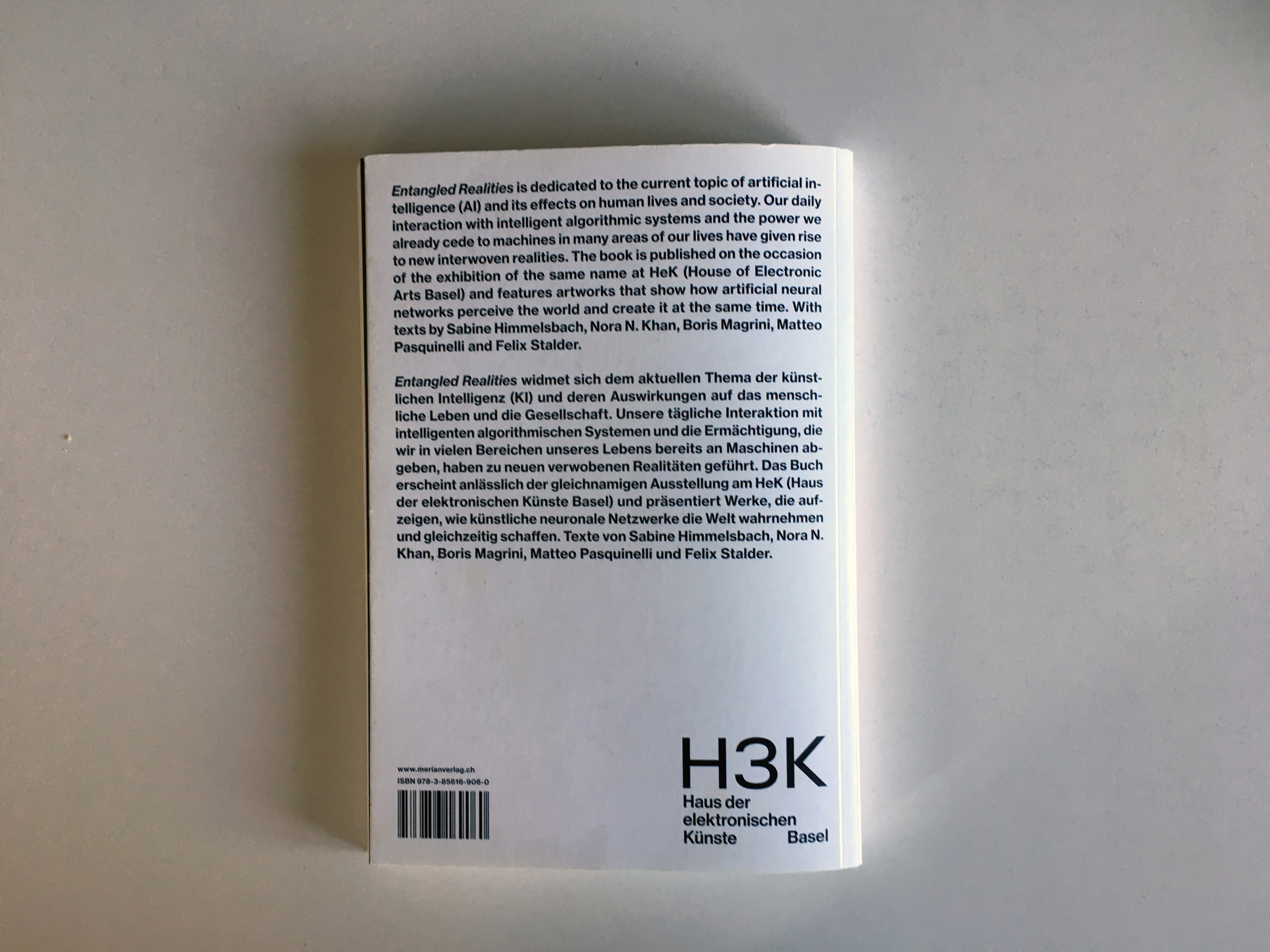Tuesday, February 27. 2024
"Universal Machine": historical graphs on the relations and fluxes between art, architecture, design, and technology (19.. - 20..) | #art&sciences #history #graphs
Note (03.2024): The contents of the files (maps) have been updated as of 02.2024.
-
Note (07.2021): As part of my teaching at ECAL / University of Art and Design Lausanne (HES-SO), I've delved into the historical ties between art and science. This ongoing exploration focuses on the connection between creative processes in art, architecture, and design, and the information sciences, particularly the computer, also known as the "Universal Machine" as coined by A. Turing. This informs the title of the graphs below and this post.
Through my work at fabric | ch, and previously as an assistant at EPFL followed by a professorship at ECAL, to experience first hand some of these massive transformations in society and culture.
Thus, in my theory courses, I've aimed to create "maps" that aid in comprehending, visualizing, and elucidating the flux and timelines of interactions among individuals, artifacts, and disciplines. These maps, imperfect and constrained by size, are continuously evolving and open to interpretation beyond my own. I regularly update them as part of the process.
Yet, in the absence of a comprehensive written, visual, or sensitive history of these techno-cultural phenomena as a whole, these maps serve as valuable approximation tools for grasping the flows and exchanges that either unite or divide them. They offer a starting point for constructing personal knowledge and delving deeper into these subjects.
This is precisely why, despite their inherent fuzziness - or perhaps because of it - I choose to share them on this blog (fabric | rblg), in an informal manner. It's an invitation for other artists, designers, researchers, teachers, students, and so forth, to begin building upon them, to depict different flows, to develop pre-existing or subsequent ideas, or even more intriguingly, to diverge from them. If such advancements occur, I'm keen on featuring them on this platform. Feel free to reach out for suggestions, comments, or to share new developments.
...
It's worth mentioning that the maps are structured horizontally along a linear timeline, spanning from the late 18th century to the mid-21st century, predominantly focusing on the industrial period. Vertically, they are organized around disciplines, with the bottom representing engineering, the middle encompassing art and design, and the top relating to humanities, social events, or movements.
Certainly, one might question this linear timeline, echoing the sentiments of writer B. Latour. What about considering a spiral timeline, for instance? Such a representation would still depict both the past and the future, while also illustrating the historical proximities of topics, connecting past centuries and subjects with our contemporary context in a circular manner. However, for the time being, and while recognizing its limitations, I adhere to the simplicity of the linear approach.
Countless narratives can emerge as inherent properties of the graphs, underscoring that they are not their origins but rather products thereof.
...
The selection of topics (code, scores-instructions, countercultural, network-related, interaction, "post-...") currently aligns with the themes of my teaching but is subject to expansion, possibly toward an underlying layer revealing the material conditions that underpinned and facilitated the entire process.
In any case, this could serve as a fruitful starting point for some further readings or perhaps a new "Where's Waldo/Wally" kind of game!
Via fabric | ch
-----
By Patrick Keller
Rem.: By clicking on the thumbnails below you'll get access to HD versions.
"Universal Machine", main map (late 18th to mid 21st centuries):
Flows in the map > "Code":
Flows in the map > "Scores, Partitions, ...":
Flows in the map > "Countercultural, Subcultural, ...":
Flows in the map > "Network Related":
Flows in the map > "Interaction":
Flows in the map > "Post-Internet/Digital, "Post -..." , "Neo -...", ML/AI":
...
To be continued (& completed) ...
Friday, February 09. 2024
Mnemosyne – History and Research in Arts and Design / (Re)Viewing Paik | #paik #digitization #digitalexhibition
Note: as part of a year-long preliminary research into digital exhibitions, we teamed up with the Nam June Paik Art Center (South Korea) - and their incredible collection and archive of Nam June Paik's works -, as well as ECAL/University of Art and Design Lausanne, to deliver initial thoughts and proofs of concept.
Late last year saw the publication of Mnemosyne, a book on "History and Research in Arts and Design" (ed. Davide Fornari, published by ECAL/University of Art and Design Lausanne (HES-SO)).
In this context, I had the chance to be in conversation with NJPAC curator Sang Ae Park about this joint research. Among other topics, we discussed the unrealized piece – at the time – "Symphony for 20 rooms" (1961) by Nam June Paik as a potential inspiration for "remote" exhibitions, at home.
This discussion gave ground to the paper "A Symphony for Nam June Paik, Digitally" (below), while this preliminary research is likely to continue in the form of a longer-term research.
-----
By Patrick Keller





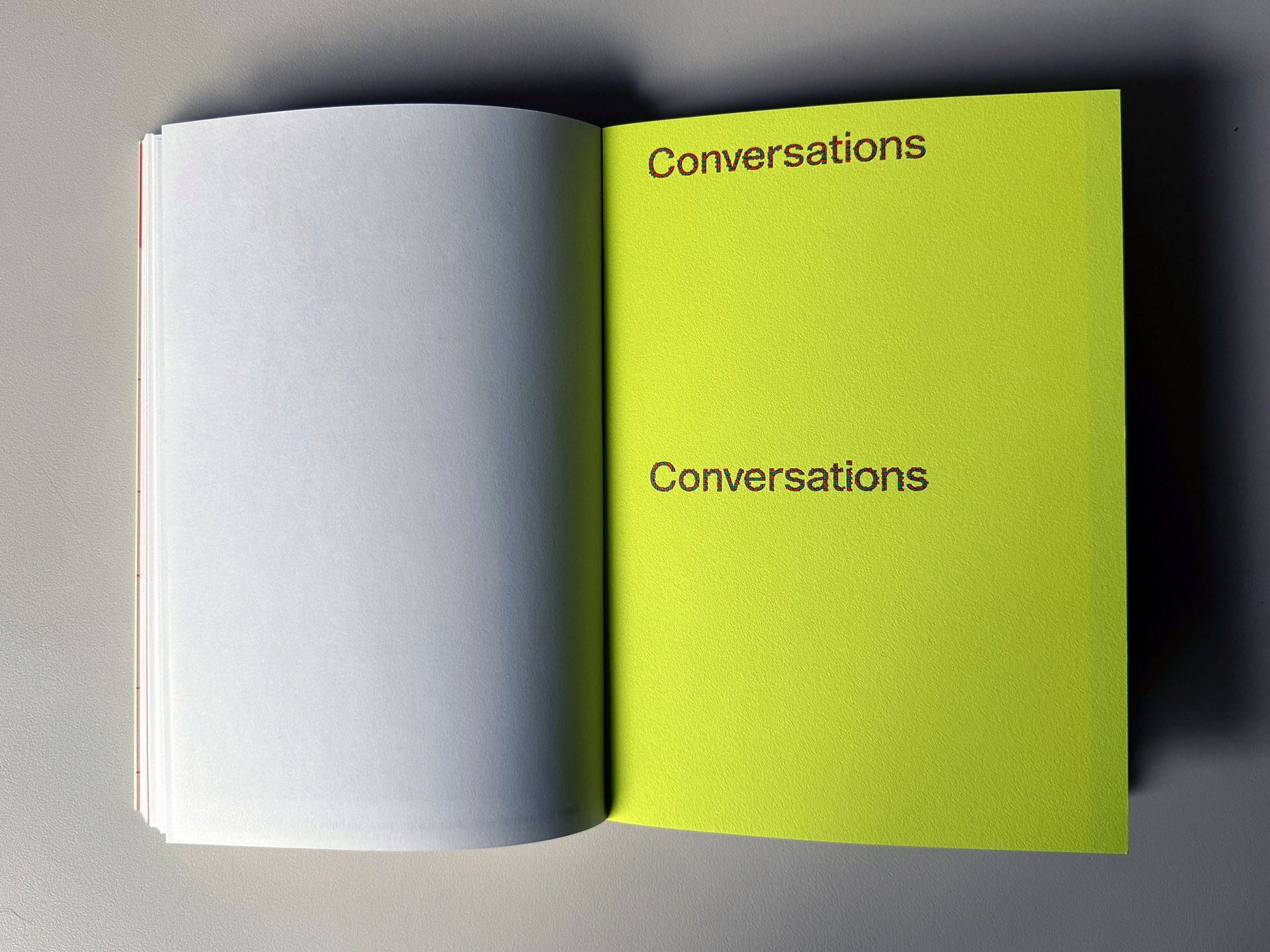



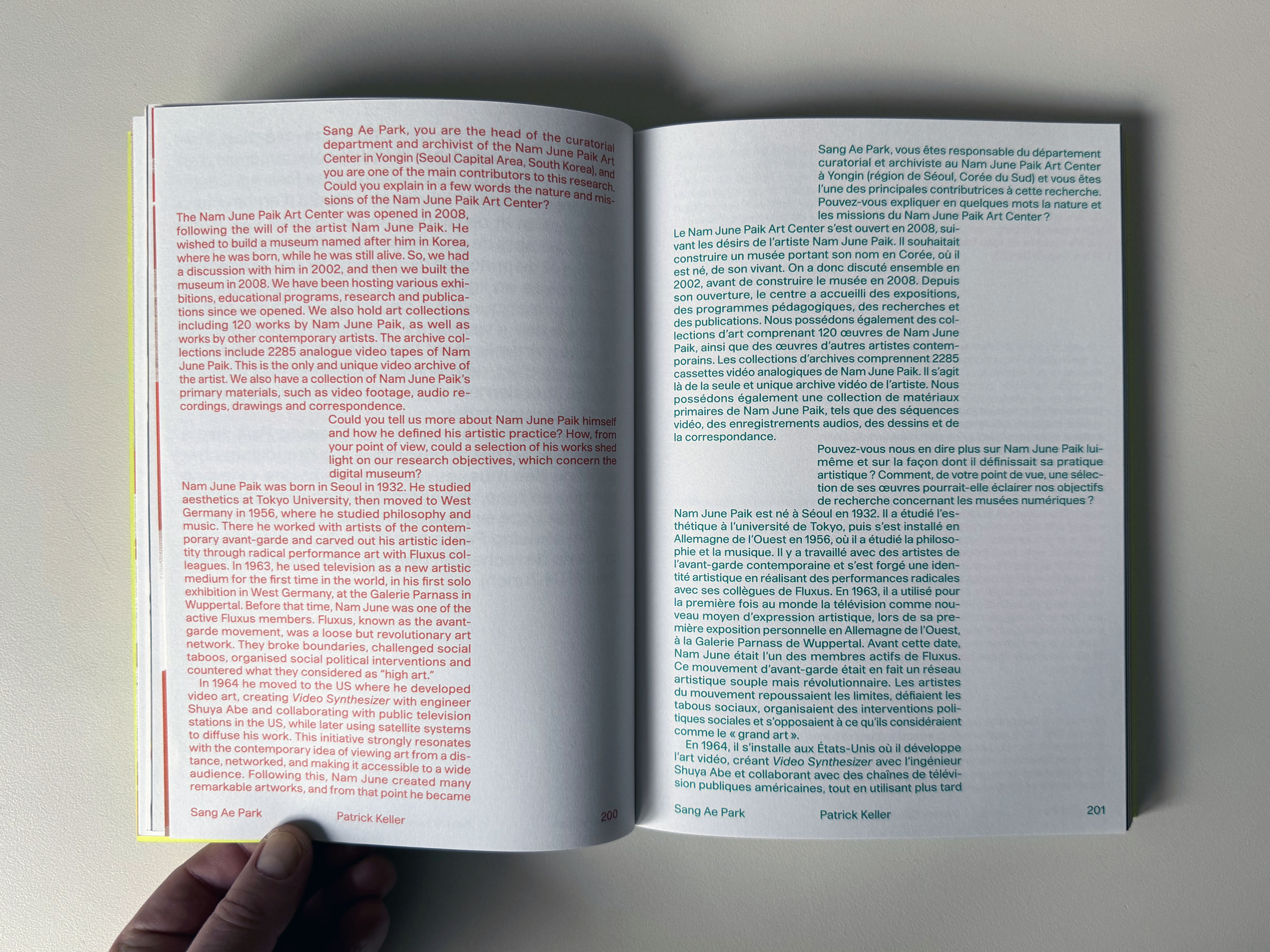
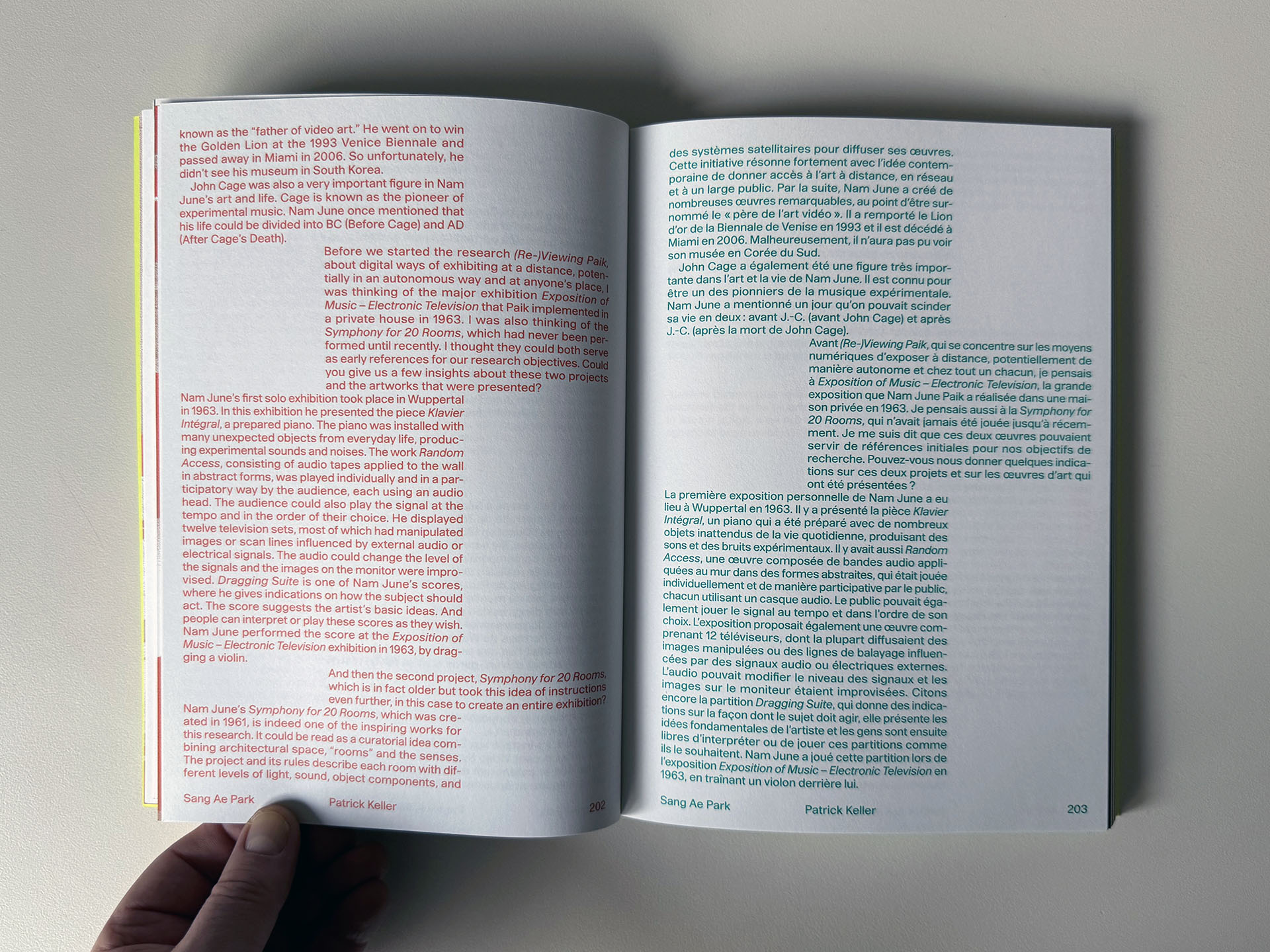

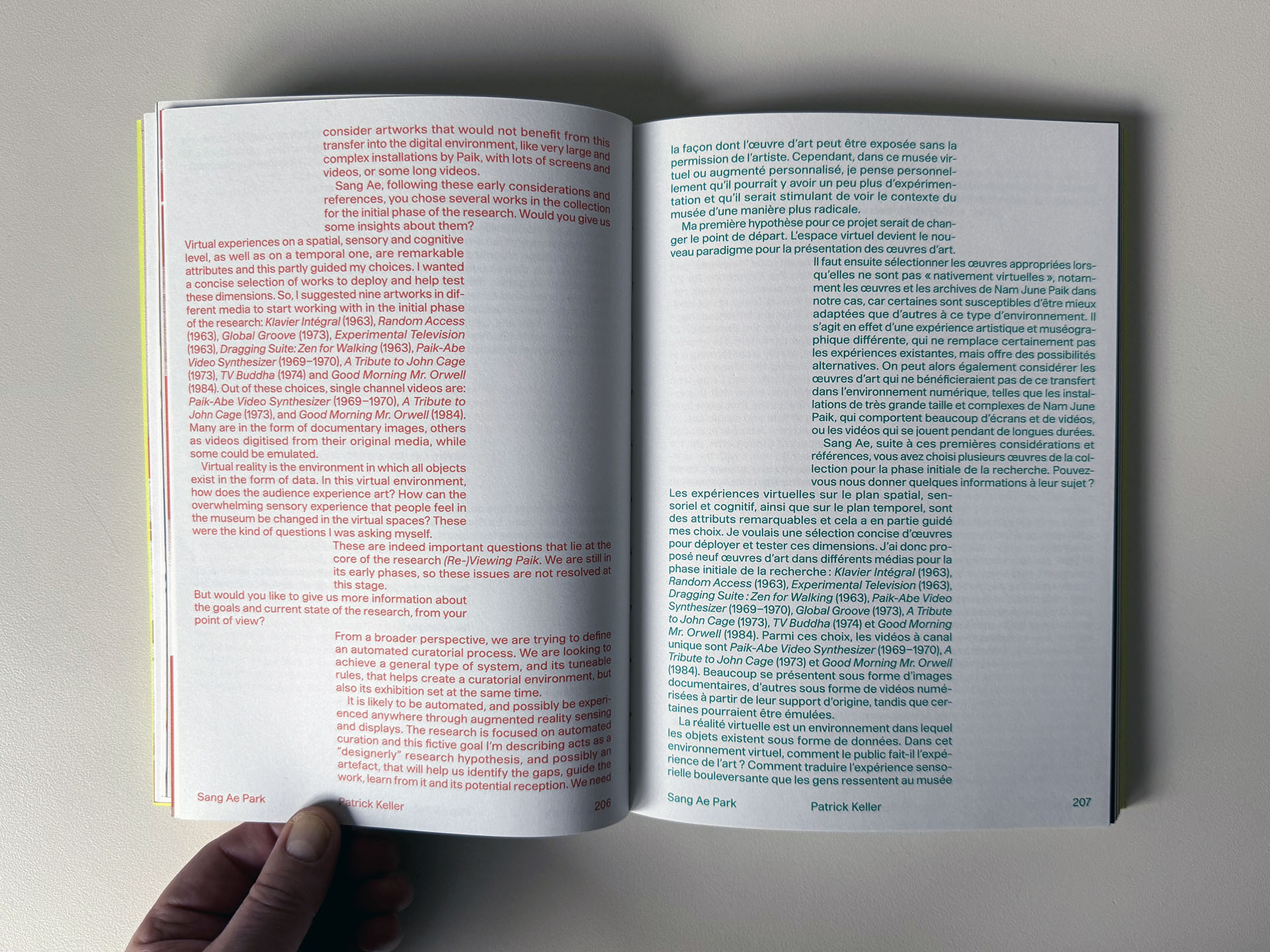
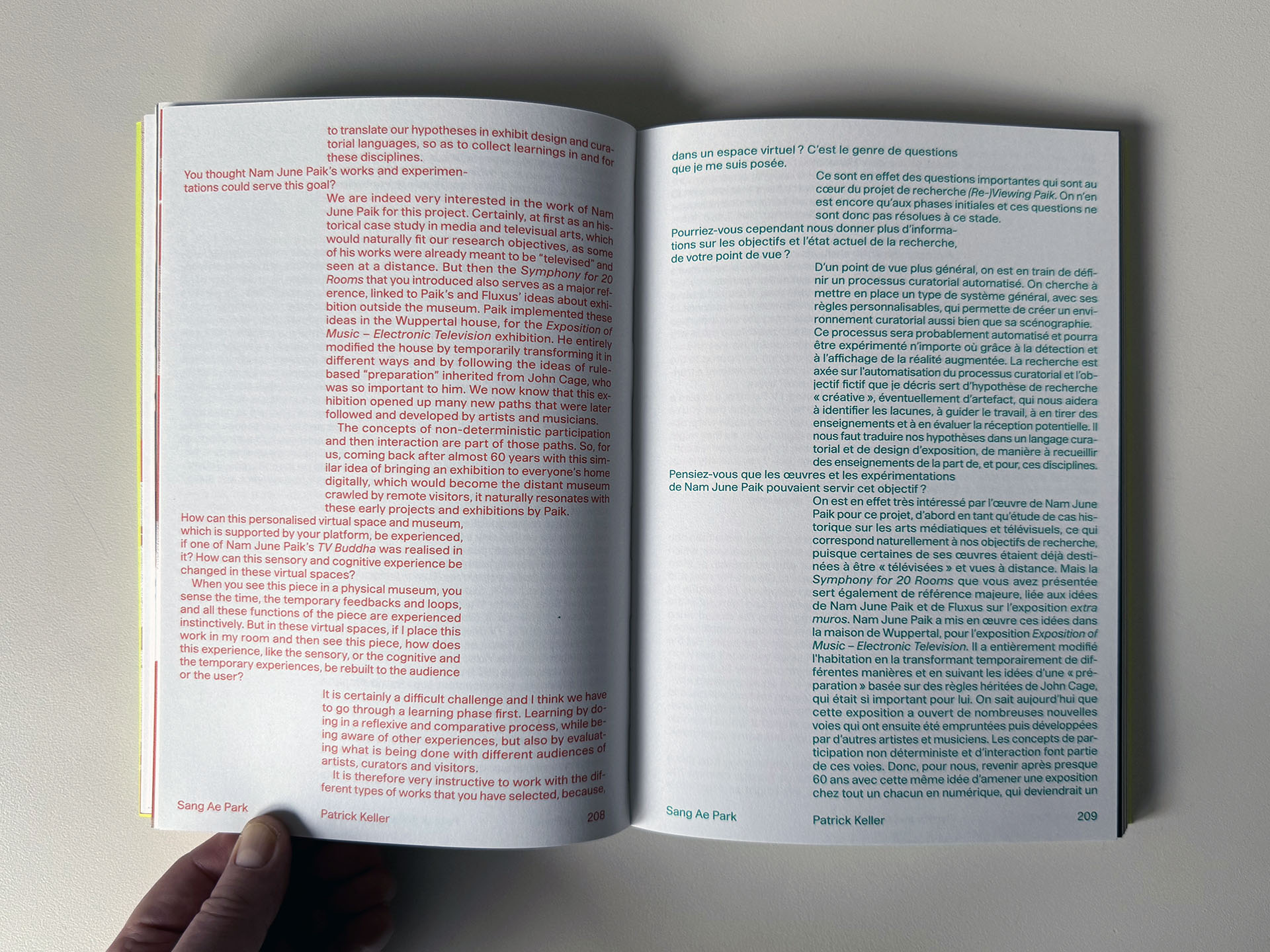
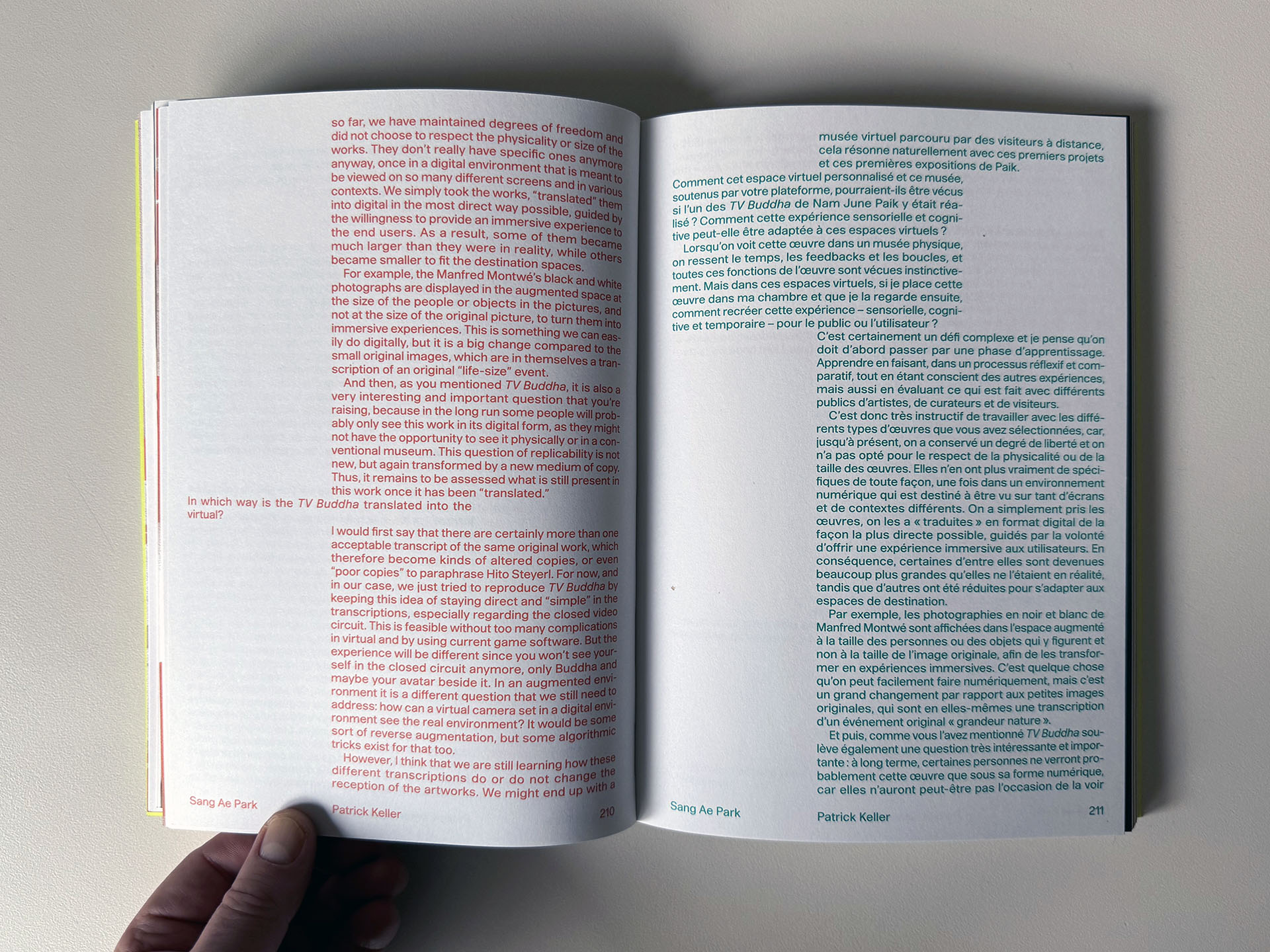
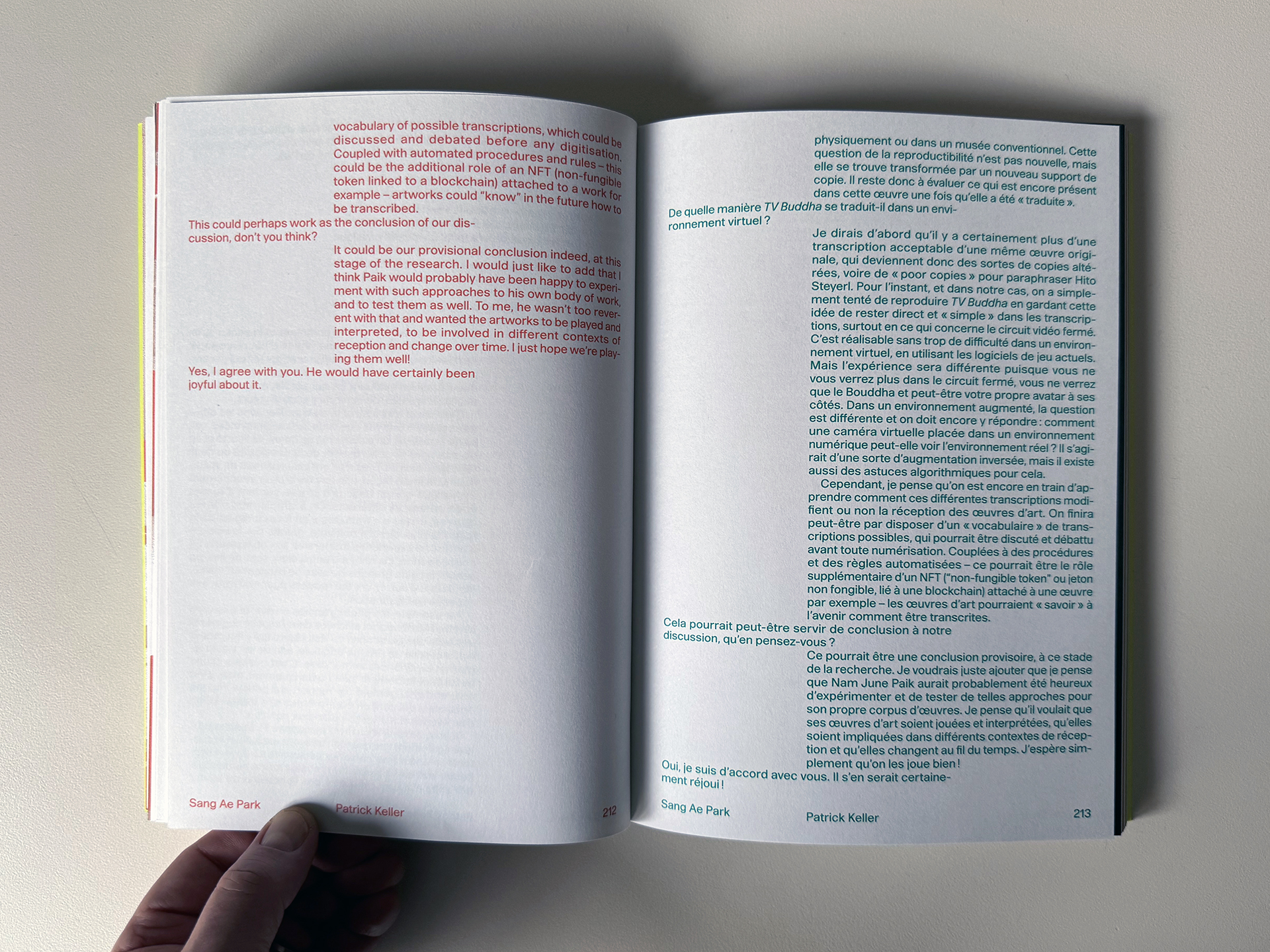


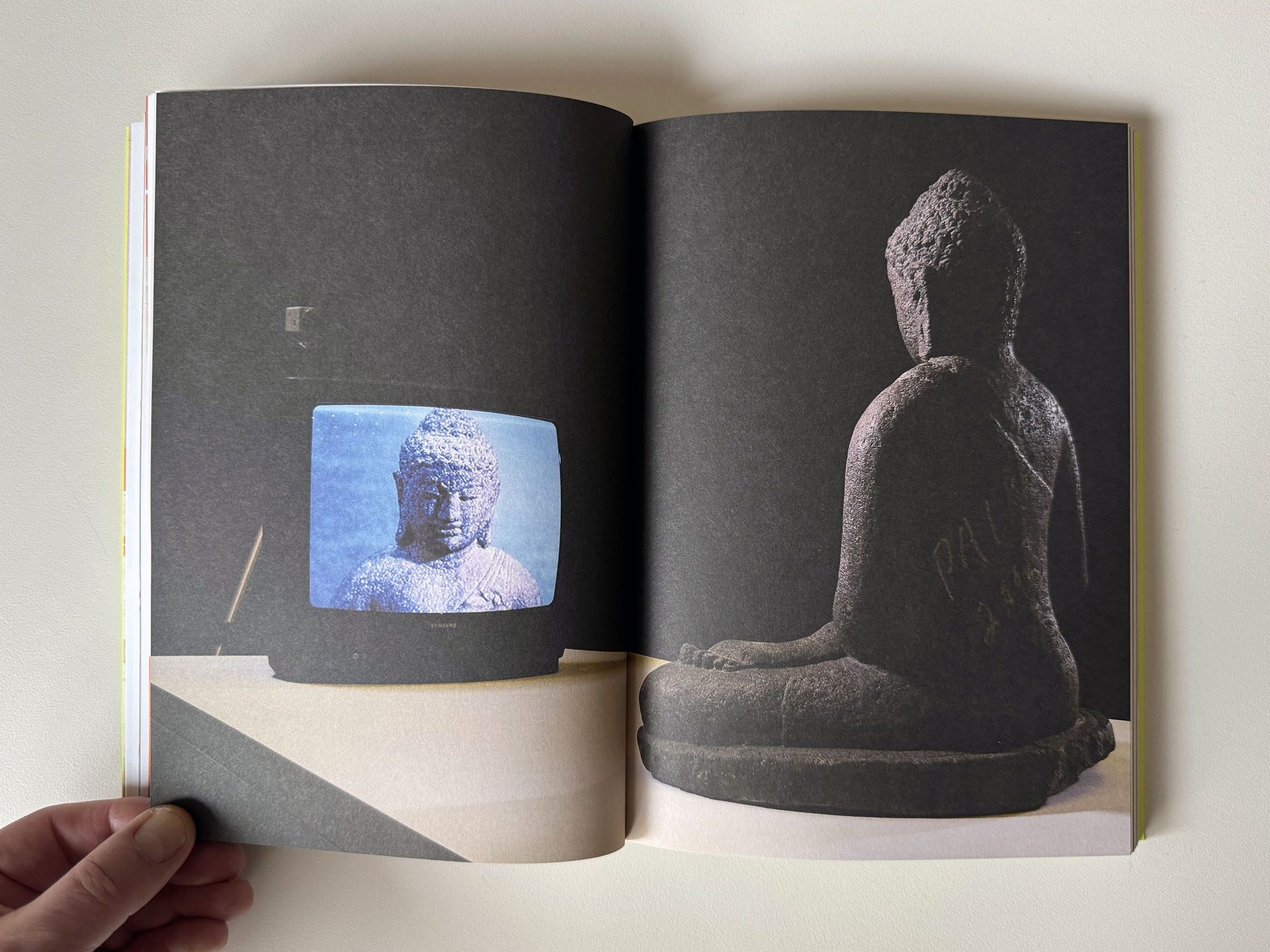
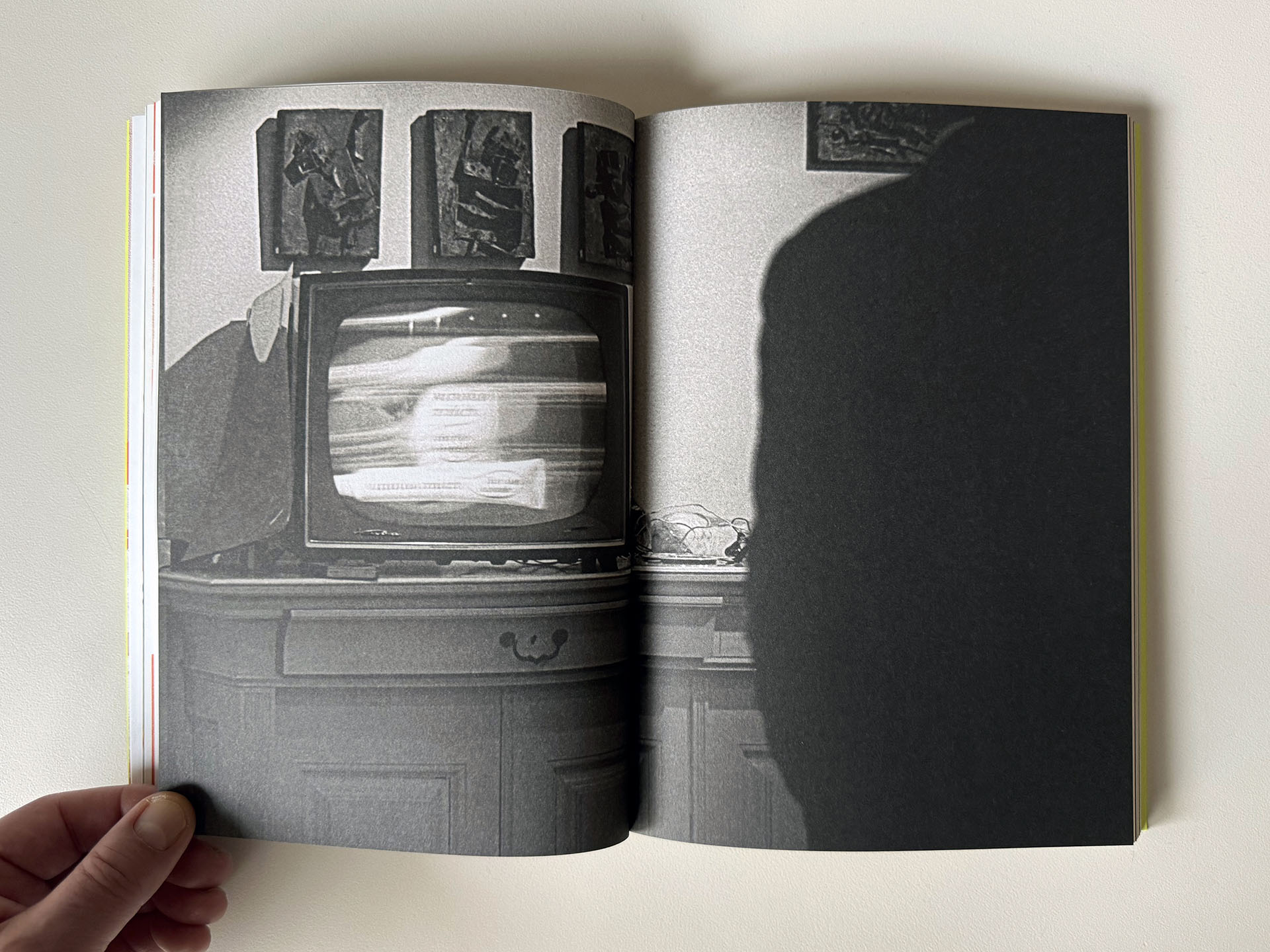

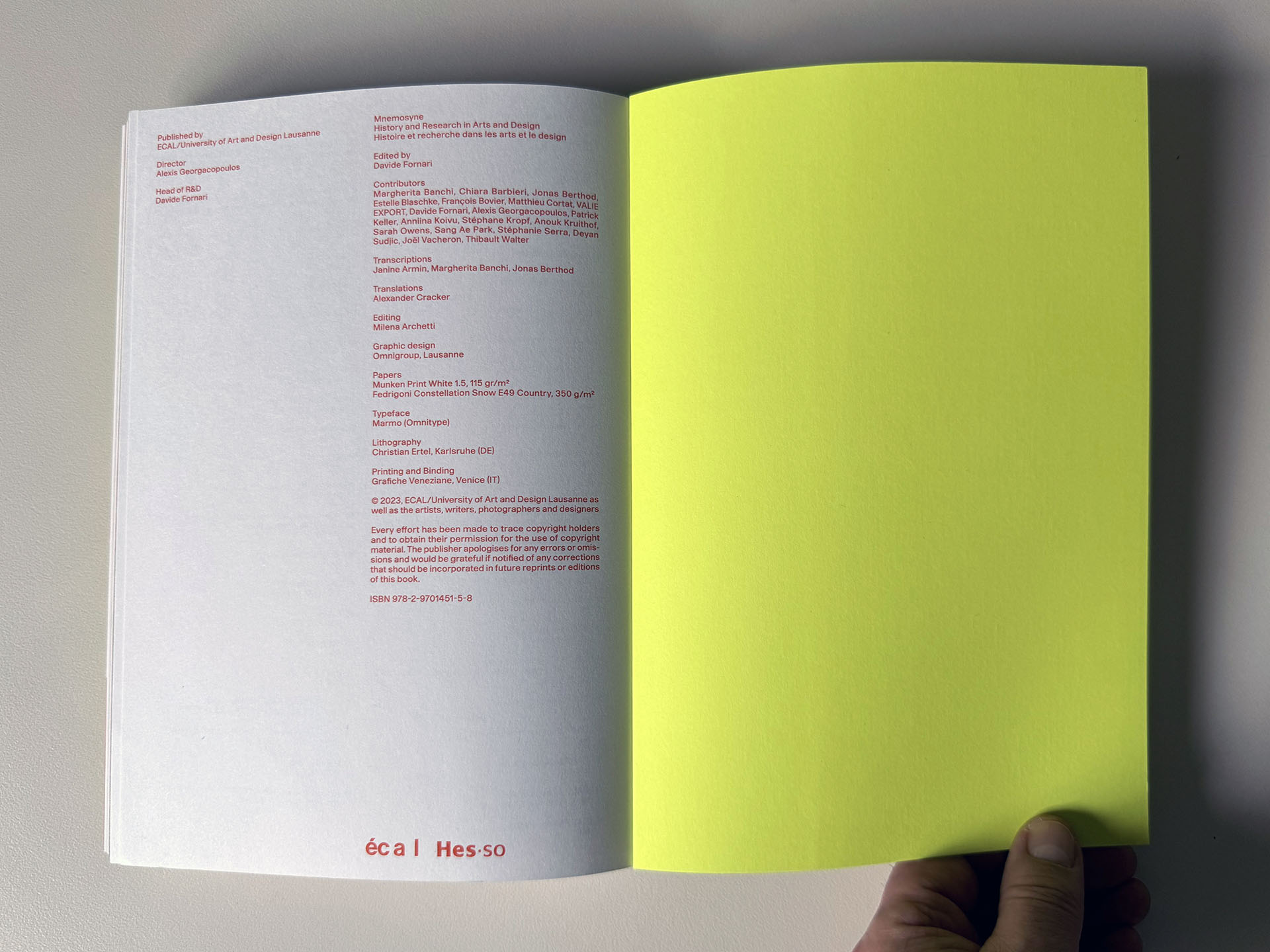

Monday, October 30. 2023
fabric | ch receives the award "Architecture & Landscape" from the Fondation vaudoise pour la culture | #architecture #experimental #digital #award
Note: this Saturday (04.11) fabric | ch will receive the "Architecture & Landscape" price from the Art Council of Canton de Vaud (CH).
It is a rare but much-apreciated recognition of our work by the region where we've been working all those years (and, at the same occasion, also one to show our faces)! We're still waiting for an invitation to exhibit fabric | ch's work somewhere in our hometown though 😉
So rejoice, and let's celebrate together during the following drinks reception!
Via @fvpc
-----
Monday, October 02. 2023
Beyond Matter – Within Space, ZKM exhibition catalogue (eds. L. Nolasco-Rószás & M. Schädler), Hatje Cantz (Berlin, 2023) | #AI #AR #VR #XR #art #digital #exhibition #curation
Note: this well-documented publication, complete with essays and which also serves as a comprehensive exhibition catalogue, was released to coincide with the end of a European research project Beyond Matter. The research was led by the ZKM (Zentrum für Kunst une Medien, Karlsruhe) and Centre George Pompidou in Paris. The publication also came out as the exhibition catalogue in relation to two exhibitions held in 2023 – n ZKM and Centre Pompidou – about the research obectives.
Beyond Matter – Within Space is certainly destined to become a central work on the issue of digital art exhibition in our time.
In this context, fabric | ch – studio for architecture, interaction & research had the chance to be involved in the exhibition at the ZKM and work with around 200 digitized artworks (of historical signifiance) provided by the research team. The "experimental architecture" project fabric | ch created at this occasion, a new work, was entitled Atomized (re-)Staging.
-----
By Patrick Keller
Monday, May 08. 2023
Creation and Curation with Artificial Intelligence, Swissnex China Blog (Shanghai, 2022) | #talk #fabricch #automated
Note: this was a talk fabric | ch gave online, along with Aiiiii Art Center later last year, in the context of Swissnex Shanghai Art & Science talks.
The online session was moderated by Cissy Sun, Head of Art-Science at Swissnex and the topic was the "hot topic" of the time: "AI" and curation. fabric | ch has recently worked on several experimental or research projects related to this topic, as well as developed in-house tools along the way, and this was an opportunity to explain how we approach this question. In particular by rooting it in architectural thinking and our previous works.
Via Swissnex China
-----
By Cissy Sun
On 6th September, we had an inspiring discussion on curation and artificial intelligence with Mr. Patrick Keller, Architect & Co-founder of fabric | ch - studio for architecture, interaction & research, and Ms. Xi Li, Curator & Director of Aiiiii Art Center.
Mr. Patrick Keller introduced the architecture studio, fabric | ch, where architects and computer scientists work together on a variety of experimental projects that combine architecture, networks, data, and algorithms.
Delving into these projects, Patrick first introduced the work - Platform of Future-Past, which was shown at HOW Art Museum in Shanghai in 2022. “Platform of Future-Past” is an architectural device and monitoring installation, it is equipped in three zones with environmental monitoring devices. The sensors record as much data as possible over time, generated by the continuously changing conditions, presences, and uses in the exhibition space. The data is then stored on Platform Future-Past’s servers and replayed in a loop on its computers. It is a “recorded moment”, “frozen” on the data servers, that could potentially replay itself forever or is waiting for someone to reactivate it. A “data center” on the deck, with its set of interfaces and visualizations screens, lets the visitors-observers follow the ongoing recording process. However, as the exhibition was interrupted by the pandemic, the museum was closed for a few months, and the data from the real exhibition space was very limited. Thus the artists fed the platform the prepared data to generate the moving images. With the touch on artificial data, Patrick reminded us to think about massive ways to treat datasets while talking about artificial intelligence.

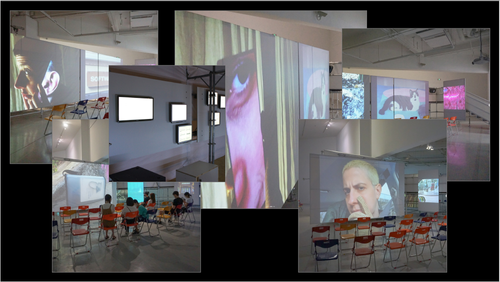
Platform of Future-Past, fabric | ch, 2022
The practice of using networks, data, and algorithms led the artists to develop a systematic approach to combining digital information with physical elements according to certain rules. Furthermore, such practices brought the artists to the exhibitions and curation projects. In the context of Entangled Realities, Living with Artificial Intelligence at the House of Electronic Arts (Basel), 2019, fabric | ch developed the work of Atomized (curatorial) Functioning (A(*)F), which was later also exhibited during Art and Science in the Age of Artificial Intelligence at the National Museum of China (Beijing), 2019.
A(*)F is an architectural project based on automated algorithmic principles, to which a machine learning layer can be added as required. It is a software piece that endlessly creates and saves new spatial configurations for a given situation, converges towards a “solution”, in real-time 3d and according to dynamic data and constraints. During the exhibition at HeK, the sensors collected data both from the artworks and the physical environment, including the walls and the lighting. The information collected by the sensors mapped out the space and helped the curators to organize the exhibition flows.

Atomized (curatorial) Functioning, fabric | ch, 2019
As an ending note, Patrick shared with us the ongoing research project between fabric | ch, the Nam June Paik Art Center (Yongin, South Korea), and ECAL / University of Art and Design, Lausanne (HES-SO), on "viewing rooms" and "digital exhibitions". The research is to give access to the collection of the art center in new ways and forms, out of the physical museum and through digital means. In addition to the research project, fabric | ch is also working on a new project about the digital presentation of the past exhibitions at ZKM (Center for Art and Media, Karlsruhe), the exhibition is planned to open at ZKM at the end of the year.

Ongoing project by fabric | ch
The International Conference on AI Art was co-organized by the Aiiiii Art Center and the Art and Artificial Intelligence Lab of Tongji University. With the theme of “AI and Authorship” (2021) and “Artificial Imagination” (2022), the conference combines the most radical of research from a diverse international curation of fields ranging from art, design, computational science, cultural critique as well as political philosophy. This network is established to pioneer and push the boundaries of artificial intelligence and creative production.
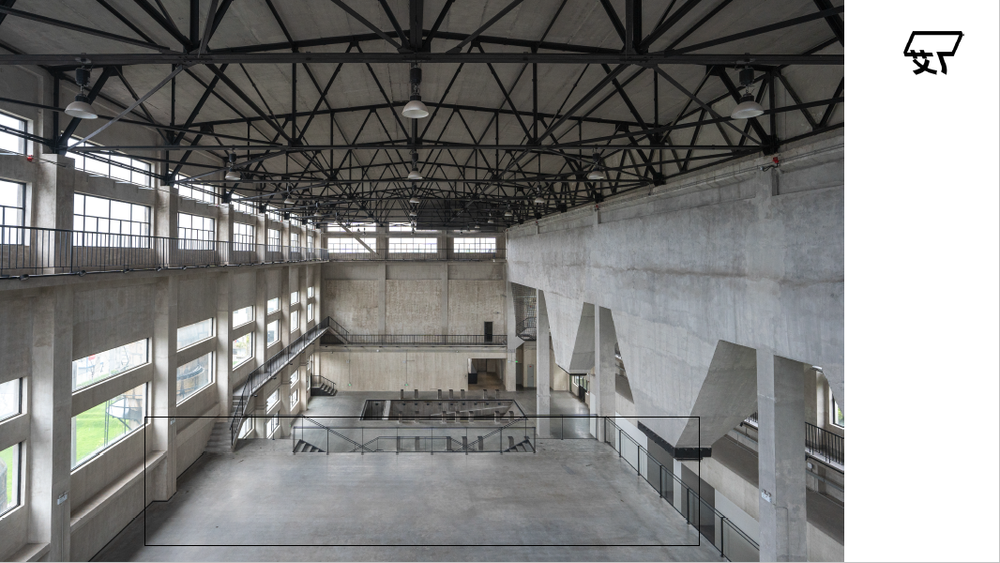
Exhibition space of Aiiiii Art Center
While looking at the exhibition space, two questions came to Xi’s mind: how to physicalize the digital artwork into the space and how to visualize AI art. The two questions lead Xi and her team to the curation concept of the Book of Sand. She chose literature to narrate the exhibition to catch the public attention and tell a good story of AI art. The exhibition starts by employing literary imagination to juxtapose seemingly infinite, random generative art and Borges’ “Book of Sand”, a book that possesses neither a beginning nor an end, just like sand. A book in which “I”, the subject, can turn the pages but cannot predict the outcome, just as we cannot fully comprehend the operational logic of the “black box” embedded by and into a neural network. Against the joy of possessing the book grows the fear that the book is not really infinite, just as we fear that the infinite productivity of AI will make us its captives, as well as the fear that its “infinite creativity” is simply the outcome of intelligent permutations of existing human ideas.

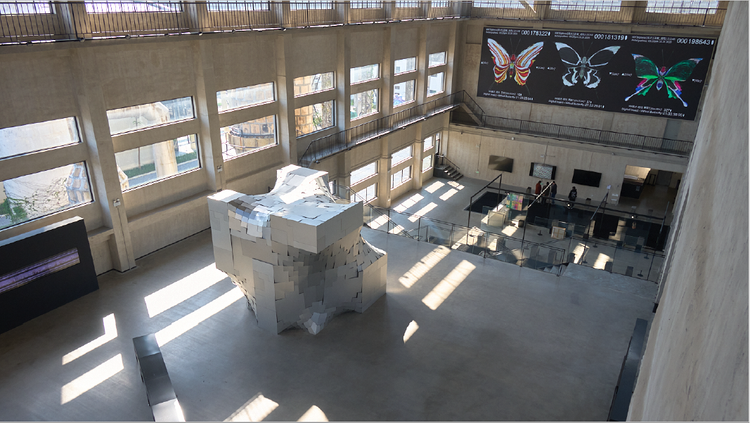
Artificial Remnants, Entangled Others Studio (left) & The Mind Scrap, Certain Measures (right)
“The Book of Sand” is an exhibition done by the joint efforts of machines and humans — the output of the machines interferes with human curatorial and artistic practices. By showcasing the works of Jake Elwes and Dabeiyuzhou, Xi explained further how they worked with the artists to turn web-based artwork into spatial installations.


The ZIZI Show, Jake Elwes (left) & Text Gene Project, Dabeiyuzhou (right)
It is inevitable to talk about what AI art is and who the author is when curating the programs and research projects at Aiiiii Art Center. However, such questions are not at the core of their curatorial practice but to discover the potential of AI itself and deliver the message appropriately to the target audience. With the involvement of machines in the creation and curation process, the question of the role of the machine became a challenging topic. Moreover, it also leads us to think – is there have to be a curator/creator’s name in the exhibition?
Responding to Xi’s question, Patrick pointed out that there are different cases dealing with the question. Taking their own practices, for example, the algorithm is at the core of their work. With the help of AI, the artists could dig deeper into their works, but the concept and the way of working are developed by the collective over years of research and practice. It is important to have their names in the exhibition as they are the creators of the work. Nevertheless, it might be challenging to define the creator for other works using open-source software and text-image software. However, in Patrick’s view, any machine learning program is fed with a huge dataset, without this, the algorithms could not do anything. The things the machines are trained to do and how they are trained to make it essential to define the creator.
Friday, March 10. 2023
Atomized (re-)Staging at ZKM, Instagram @zkmkarlsruhe (2023) | #fabricch #digital #exhibition #algorithmic #intelligence
Via
-----
Tuesday, January 17. 2023
Pro Helvetia – Visual Arts – Beneath the Skin, Between the Machines (2022) | #exhibition #bestof2022 #review
Note: fabric | ch is thrilled to be part of Pro Helvetia's Shanghai best of 2022! Thanks for this new post and for the support to the exhibition at the HOW Art Museum, as well as it's performances and online lectures program during the pandemic!
We were glad to see that the architectural installation fabric | ch realized in this context remained useful also for remote interaction, exchange of ideas and collaboration.
...
And it's also a way – and still the time – to wish everyone a good start in 2023! With, we hope, many successes, exciting projects and creative statements responding to the challenges of our time.
Via Pro Helvetia (Visual Arts)
-----
Our Best Picks of 2022
For art practitioners or audiences alike, it has not been an easy year. The path of global encounter seemed distant for a while, but has never vanished. Somehow we know, maybe in the most surprising manner, that we will meet each other again halfway. It could be one of these reassuring moments that convinced us of hope when the world is turned upside down: the flipping of bookpages, the smiles from digital rooms, a concert without performers, a recital without playwrights. We are so eager to present what has excited, motivated, or touched us in the past year. Scroll down and discover a diverse selection of projects highlighted under the three overarching themes -- support, connect, and inspire.
Wish you a brilliant start and a Happy New Year 2023!
Pro Helvetia Shanghai



Pro Helvetia Shanghai
Swiss Arts Council
Room 509, Building 1
No.1107, Yuyuan Road, Changning District
Shanghai 200050, China
shanghai@prohelvetia.cn
-----
Beneath the Skin, Between the Machines

Exhibition overview
---
---
“Man is only man at the surface. Remove the skin, dissect, and immediately you come to machinery.” When Paul Valéry wrote this down, he might not foresee that human beings – a biological organism – would indeed be incorporated into machinery at such a profound level in a highly informationized and computerized time and space. In a sense, it is just as what Marx predicted: a conscious connection of machine[1]. Today, machine is no longer confined to any material form; instead, it presents itself in the forms of data, coding and algorithm – virtually everything that is “operable”, “calculable” and “thinkable”. Ever since the idea of cyborg emerges, the man-machine relation has always been intertwined with our imagination, vision and fear of the past, present and future.
In a sense, machine represents a projection of human beings. We human beings transfer ideas of slavery and freedom to other beings, namely a machine that could replace human beings as technical entities or tools. Opposite (and similar, in a sense,) to the “embodiment” of machine, organic beings such as human beings are hurrying to move towards “disembodiment”. Everything pertinent to our body and behavior can be captured and calculated as data. In the meantime, the social system that human beings have created never stops absorbing new technologies. During the process of trial and error, the difference and fortuity accompanying the “new” are taken in and internalized by the system. “Every accident, every impulse, every error is productive (of the social system),”[2] and hence is predictable and calculable. Within such a system, differences tend to be obfuscated and erased, but meanwhile due to highly professional complexities embedded in different disciplines/fields, genuine interdisciplinary communication is becoming increasingly difficult, if not impossible.
As a result, technologies today are highly centralized, homogenized, sophisticated and commonized. They penetrate deeply into our skin, but beyond knowing, sensing and thinking. On the one hand, the exhibition probes into the reconfiguration of man by technologies through what’s “beneath the skin”; and on the other, encourages people to rethink the position and situation we’re in under this context through what’s “between the machines”. As an art institute located at Shanghai Zhangjiang Hi-Tech Industrial Development Zone, one of the most important hi-tech parks in China, HOW Art Museum intends to carve out an open rather than enclosed field through the exhibition, inviting the public to immerse themselves and ponder upon the questions such as “How people touch machines?”, “What the machines think of us?” and “Where to position art and its practice in the face of the overwhelming presence of technology and the intricate technological reality?” Departing from these issues, the exhibition presents a selection of recent works of Revital Cohen & Tuur Van Balen, Simon Denny, Harun Farocki, Nicolás Lamas, Lynn Hershman Leeson, Lu Yang, Lam Pok Yin, David OReilly, Pakui Hardware, Jon Rafman, Hito Steyerl, Shi Zheng and Geumhyung Jeong. In the meantime, it intends to set up a “panel installation”, specially created by fabric | ch for this exhibition, trying to offer a space and occasion for decentralized observation and participation in the above discussions. Conversations and actions are to be activated as well as captured, observed and archived at the same time.
[1] Karl Marx, “Fragment on Machines”, Foundations of a Critique of Political Economy
[2] Niklas Luhmann, Social Systems
---
fabric | ch, Platform of Future-Past, 2022, Installation view at HOW Art Museum.
Work by fabric | ch
HOW Art Museum has invited Lausanne-based artist group fabric | ch to set up a “panel installation” based on their former project “Public Platform of Future Past” and adapted to the museum space, fostering insightful communication among practitioners from different fields and the audiences.
“Platform of Future-Past” is a temporary environmental device that consists in a twenty meters long walkway, or rather an observation deck, almost archaeological: a platform that overlooks an exhibition space and that, paradoxically, directly links its entrance to its exit. It thus offers the possibility of crossing this space without really entering it and of becoming its observer, as from archaeological observation decks. The platform opens- up contrasting atmospheres and offers affordances or potential uses on the ground.
The peculiarity of the work consists thus in the fact that it generates a dual perception and a potential temporal disruption, which leads to the title of the work, Platform of Future-Past: if the present time of the exhibition space and its visitors is, in fact, the “archeology” to be observed from the platform, and hence a potential “past,” then the present time of the walkway could be understood as a possible “future” viewed from the ground…
“Platform of Future-Past” is equipped in three zones with environmental monitoring devices. The sensors record as much data as possible over time, generated by the continuously changing conditions, presences and uses in the exhibition space. The data is then stored on Platform Future-Past’s servers and replayed in a loop on its computers. It is a “recorded moment”, “frozen” on the data servers, that could potentially replay itself forever or is waiting for someone to reactivate it. A “data center” on the deck, with its set of interfaces and visualizations screens, lets the visitors-observers follow the ongoing process of recording.
The work could be seen as an architectural proposal built on the idea of massive data production from our environment. Every second, our world produces massive amounts of data, stored “forever” in remote data centers, like old gas bubbles trapped in millennial ice.
As such, the project is attempting to introduce doubt about its true nature: would it be possible, in fact, that what is observed from the platform is already a present recorded from the past? A phantom situation? A present regenerated from the data recorded during a scientific experiment that was left abandoned? Or perhaps replayed by the machine itself ? Could it already, in fact, be running on a loop for years?
---
Schedule
Duration: January 15-April 24, 2022
Artists: Revital Cohen & Tuur Van Balen, Simon Denny, fabric | ch, Harun Farocki, Geumhyung Jeong, Nicolás Lamas, Lynn Hershman Leeson, Lu Yang, Lam Pok Yin, David OReilly, Pakui Hardware, Jon Rafman, Hito Steyerl, Shi Zheng
Curator: Fu Liaoliao
Organizer: HOW Art Museum, Shanghai
Lead Sponsor: APENFT Foundation
Swiss participation is supported by Pro Helvetia Shanghai, Swiss Arts Council.
---
[Banner image: fabric | ch, Platform of Future-Past, 2022, Scaffolding, projection screens, sensors, data storage, data flows, plywood panels, textile partitions, Dimensions variable.]
Event I
Beneath the Skin, Between the Machines — Series Panel
Investigating Sensoriums: Beyond Life/Machine Dichotomy

Schedule
Organizers: HOW Art Museum, Pro Helvetia Shanghai, Swiss Arts Council
Date: March 19, 2022
Time : 15:00 -16:30 (CST) / 8:00 – 9:30 (CET)
Host: Iris Long
Guests: Zian Chen, Geocinema (Solveig Qu Suess, Asia Bazdyrieva), Marc R. Dusseiller
Language: Chinese, English (with Chinese translation)
Event on Zoom(500 audience limit)
Link: https://zoom.us/j/92512967837
---
This round of discussion derived from the participating speakers’ responses toward to the title of the exhibition, Beneath the Skin, Between The Machines.
What lies beneath the skin of the earth and between the machines may well be signals among sensors. Geocinema’s study on the One Belt One Road initiative and exploration of a “planetary” notion of cinema relate directly to the above concern. Marc R. Dusseiller as a transdisciplinary scholar draws our attention to the possible pathways that skin/machines may generate for understanding to go beyond life/machine dichotomy. Zian Chen’s recent research attempts to bring the mediatized explorations back to our real living conditions. He will resort to real news events as cases to show why these mediatized explorations are embodied experience.
HOW Art Museum in collaboration with Pro Helvetia Shanghai, Swiss Arts Council, invite Zian Chen (writer and curator), Geocinema (art collective) and Marc R. Dusseiller (transdisciplinary scholar and artist) to have a panel discussion, probing into the topic of Beneath the Skin, Between The Machines from the perspectives of their own practice and experience. The panel will be moderated by curator and writer Iris Long.
* Due to pandemic restrictions, the panel will take place online. Video recording of the panel will be played on Platform of Future-Past (2022), an environmental installation conceived by fabric | ch, studio for architecture, interaction and research, for the exhibition.
---
About the Host
Iris Long
About the Guests
Zian Chen, Geocinema, Marc R. Dusseiller
---
Event II

Schedule
Organizers: HOW Art Museum, Pro Helvetia Shanghai, Swiss Arts Council, Conversazione (CVSZ)
Date: April 16, 2022
Time : 14:00-15:30(CST)/ 7:00 – 8:30 (CET)
Host: Cai Yixuan
Guests:Chloé Delarue, fabric | ch, Pedro Wirz, Chun Shao
Language: Chinese, English (with Chinese translation)
Event on Zoom(500 audience limit)
Link: https://us06web.zoom.us/j/85822263121
---
In the hotbed to breed new forms of life, the notion of “life” and digital intimacy are under constant construction and development.
Unfolding the histories of nature and civilization, what kind of interactions could be perceived from the materials, which we constantly used in past narratives, and the environment? How have these interactive relationships, perceivable yet invisible, been evolving and entwined?
This Saturday from 14:00 to 15:30, HOW Art Museum in collaboration with Pro Helvetia Shanghai, Swiss Arts Council and Conversazione, research-based art and design collective based in China, invite Chloé Delarue, whose ongoing body of work centers on the notion of TAFAA – Towards A Fully Automated Appearance; fabric | ch, studio for architecture and research who present an environmental installation at HOW Art Museum where discussions and events could take place; Pedro Wirz whose practice seeks to merge the supernatural with scientific realities; and Shao Chun whose new media artistic practice is dedicated to combing traditional handicrafts and electronic programming to have a panel discussion.
The event intends to probe into the topics covered in Beneath the Skin, Between The Machines and participants will share with audience their insights to materials and media from the perspectives of their own practices. The panel will be moderated by curator Cai Yixuan.
---
About the Host
Cai Yixuan
About the Guests
Chloé Delarue, fabric | ch, Pedro Wirz, Chun Shao
---
Event III
Beneath the Skin, Between the Machines — Online Performance
Holding it together*: myself and the other by Jessica Huber

Schedule
Artist: Jessica Huber, in collaboration with the performers Géraldine Chollet & Robert Steijn, video by Michelle Ettlin
Date: May 31, 2022, 21:00-June 4, 24:00, 2022
Organizer: HOW Art Museum
Performance Support: Pro Helvetia Shanghai, Swiss Arts Council
Technical Support: Centre for Experimental Film (CEF)
Online Screening: Link
---
*Due to COVID-related prevention measures, this projection of the performance will take place online via CEF.
Performance projection will be played when the museum can reopen on Platform of Future-Past (2022), an environmental installation conceived by fabric | ch, studio for architecture, interaction and research, for the exhibition.
HOW Art Museum (Shanghai) will also be temporarily closed during this period.
---
About the artist
Jessica Huber works as an artist in the field of the performing arts and is also together with Karin Arnold a founding member of mercimax, a performance collective based in Zürich.
After finishing her dance studies in London, she danced for various dance companies and most of her early pieces have been dance pieces too. Though her recent work and the forms and formats she chooses, have become more diverse during the past few years. Recently she has been collaborating with the British artist and activist James Leadbitter aka the vacuum cleaner on the hope & fear project.
Jessica works with curiosity and has a special interest in the texture of relationships and in how we function as individuals and as communities in society. She regularly gives workshops to professionals and non-professionals (different social groups) and teaches as a guest tutor at the Hyperwerk in Basel (Institut for studies for Post Industrial Design – or as they call it “the place where we think about how we want to live together in the future”) and is one of two artists who are part of the newly founded dramaturgy pool of Tanzhaus Zürich. She deeply enjoys diversity and is fascinated by the many possible aesthetics of exchange and sharing.
---
About the performance

Picture in the dark: Fletcher/Huber, picture daytime: Ettlin/Huber *pictures from “holding it together”: Nelly Rodriguez
Holding it together*: myself and the other is first of all an encounter between the two performers Géraldine Chollet and Robert Steijn – and the underlying questions of what binds us together and how we create intimacy, playfulness and trust by sharing rituals and treatments with each other.
Two very different and differently old bodies nestle together, doing silent rituals of gentle intimacy. They explain, apparently quite privately, how they met at a party and worked with each other – one with, one without a plan – and what this resulted in. The Dutch performer with a penchant for Shamanism and the dancer from Lausanne offer each other a song, a dance and neither shy away from deep feelings…
“Holding it together” is a series of collaborations, performances and researches Jessica Huber created in collaboration with different artists. The first idea for ‘Holding it together’ sparked during her studio residency in Berlin in 2013. This led to a collection of ideas, approaches to movement and formats under the thematic umbrella: ‘Holding it together’. Four thematic chapters or acts stem from this period: – The Thing; The Mass; Myself; Myself & the other(s).
“Holding it together” is not only a reference to the series’ overarching theme of cooperation and the question of how we perceive and create our world, but also an announcement of the working method: At the core of this series were reflections about the aesthetics and praxis of exchange and sharing, about rituals, as well as the longing for space and time for encounter.
Tuesday, October 05. 2021
"Automation algorithmiques et créolisations", revue Espace (Montréal, 2020) | #publications #AI #algorithms #automated
Note: an interview about the implications of AI in art and the work of fabric | ch in particular, between Nathalie Bachand (writer & independant curator), Christophe Guignard and myself (both fabric | ch). The exchange happened in the context of a publication in the art magazine Espace, it was fruitful and we had the opportunity to develop on recent projects, like the "Atomized" serie of architectural works that will continue to evolve, as well as our monographic exhibition at Kunshalle Éphémère, entitled Environmental Devices (1997 - 2017).
-----
By fabric | ch
Tuesday, September 21. 2021
"Essais climatiques" by P. Rahm, Ed. B2 (Paris, 2020) | #2ndaugmentation #essay #AR #VR
Note: it is with great pleasure and interest that I read recently one of Philippe Rahm's last publication, "Essais climatiques" (published in French, by Editions B2), which consists in fact in a collection of articles published in the past 10+ years in various magazines, journals and exhibition catalogs. It is certainly less developed than the even more recent book, "L'histoire naturelle de l'architecture" (ed. Pavillon de l'Arsenal, 2020), but nonetheless an excellent and brief introduction to his thinking and work.
Philippe Rahm's call for the "return" of an "objective architecture", climatic and free of narrative issues, is of great interest. Especially at a time when we need to reduce our CO2 emissions and will need to reach energy objectives of slenderness. The historical reading of the postmodern era (in architecture), in relation to oil, vaccines and antibiotics is also really valuable in this context, when we are all looking to move forward this time in cultural history.
I also had the good surprise, and joy, to see the text "L'âge de la deuxième augmentation" finally published! It was written by Philippe back in 2009 probably, about the works of fabric | ch at the time, when we were preparing a publication that finally never came out... Though this text will also be part of a monographic publication that is expected to be finalized and self-published in 2022.
Via fabric | ch
-----
Tuesday, August 31. 2021
Entangled Realities, HeK exhibition catalogue (eds. S. Himmelsbach & B. Magrini), C. Merian Verlag (Basel, 2021) | #AI #art #environments
Note: this publication was released at the occasion of the exhibition Entangled Realities - Living with Artificial Intelligence, curated by Sabine Himmelsbach & Boris Magrini at Haus der elektronischen Künste, in Basel.
The project Atomized (curatorial) Functioning (pdf), part of the Atomized (*) Functioning serie, was presented, used and debatedi n this context.
-----
By Patrick Keller
fabric | rblg
This blog is the survey website of fabric | ch - studio for architecture, interaction and research.
We curate and reblog articles, researches, writings, exhibitions and projects that we notice and find interesting during our everyday practice and readings.
Most articles concern the intertwined fields of architecture, territory, art, interaction design, thinking and science. From time to time, we also publish documentation about our own work and research, immersed among these related resources and inspirations.
This website is used by fabric | ch as archive, references and resources. It is shared with all those interested in the same topics as we are, in the hope that they will also find valuable references and content in it.
Quicksearch
Categories
Calendar
|
|
July '25 | |||||
| Mon | Tue | Wed | Thu | Fri | Sat | Sun |
| 1 | 2 | 3 | 4 | 5 | 6 | |
| 7 | 8 | 9 | 10 | 11 | 12 | 13 |
| 14 | 15 | 16 | 17 | 18 | 19 | 20 |
| 21 | 22 | 23 | 24 | 25 | 26 | 27 |
| 28 | 29 | 30 | 31 | |||

